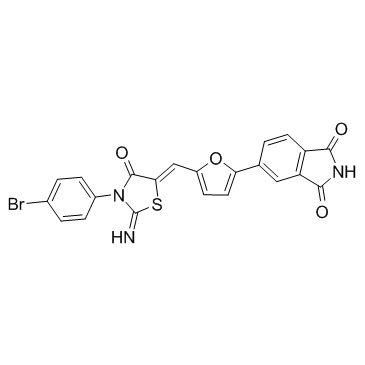Apoptosis
As one of the cellular death mechanisms, apoptosis, also known as programmed cell death, can be defined as the process of a proper death of any cell under certain or necessary conditions. Apoptosis is controlled by the interactions between several molecules and responsible for the elimination of unwanted cells from the body.
Many biochemical events and a series of morphological changes occur at the early stage and increasingly continue till the end of apoptosis process. Morphological event cascade including cytoplasmic filament aggregation, nuclear condensation, cellular fragmentation, and plasma membrane blebbing finally results in the formation of apoptotic bodies. Several biochemical changes such as protein modifications/degradations, DNA and chromatin deteriorations, and synthesis of cell surface markers form morphological process during apoptosis.
Apoptosis can be stimulated by two different pathways: (1) intrinsic pathway (or mitochondria pathway) that mainly occurs via release of cytochrome c from the mitochondria and (2) extrinsic pathway when Fas death receptor is activated by a signal coming from the outside of the cell.
Different gene families such as caspases, inhibitor of apoptosis proteins, B cell lymphoma (Bcl)-2 family, tumor necrosis factor (TNF) receptor gene superfamily, or p53 gene are involved and/or collaborate in the process of apoptosis.
Caspase family comprises conserved cysteine aspartic-specific proteases, and members of caspase family are considerably crucial in the regulation of apoptosis. There are 14 different caspases in mammals, and they are basically classified as the initiators including caspase-2, -8, -9, and -10; and the effectors including caspase-3, -6, -7, and -14; and also the cytokine activators including caspase-1, -4, -5, -11, -12, and -13. In vertebrates, caspase-dependent apoptosis occurs through two main interconnected pathways which are intrinsic and extrinsic pathways. The intrinsic or mitochondrial apoptosis pathway can be activated through various cellular stresses that lead to cytochrome c release from the mitochondria and the formation of the apoptosome, comprised of APAF1, cytochrome c, ATP, and caspase-9, resulting in the activation of caspase-9. Active caspase-9 then initiates apoptosis by cleaving and thereby activating executioner caspases. The extrinsic apoptosis pathway is activated through the binding of a ligand to a death receptor, which in turn leads, with the help of the adapter proteins (FADD/TRADD), to recruitment, dimerization, and activation of caspase-8 (or 10). Active caspase-8 (or 10) then either initiates apoptosis directly by cleaving and thereby activating executioner caspase (-3, -6, -7), or activates the intrinsic apoptotic pathway through cleavage of BID to induce efficient cell death. In a heat shock-induced death, caspase-2 induces apoptosis via cleavage of Bid.
Bcl-2 family members are divided into three subfamilies including (i) pro-survival subfamily members (Bcl-2, Bcl-xl, Bcl-W, MCL1, and BFL1/A1), (ii) BH3-only subfamily members (Bad, Bim, Noxa, and Puma9), and (iii) pro-apoptotic mediator subfamily members (Bax and Bak). Following activation of the intrinsic pathway by cellular stress, pro‑apoptotic BCL‑2 homology 3 (BH3)‑only proteins inhibit the anti‑apoptotic proteins Bcl‑2, Bcl-xl, Bcl‑W and MCL1. The subsequent activation and oligomerization of the Bak and Bax result in mitochondrial outer membrane permeabilization (MOMP). This results in the release of cytochrome c and SMAC from the mitochondria. Cytochrome c forms a complex with caspase-9 and APAF1, which leads to the activation of caspase-9. Caspase-9 then activates caspase-3 and caspase-7, resulting in cell death. Inhibition of this process by anti‑apoptotic Bcl‑2 proteins occurs via sequestration of pro‑apoptotic proteins through binding to their BH3 motifs.
One of the most important ways of triggering apoptosis is mediated through death receptors (DRs), which are classified in TNF superfamily. There exist six DRs: DR1 (also called TNFR1); DR2 (also called Fas); DR3, to which VEGI binds; DR4 and DR5, to which TRAIL binds; and DR6, no ligand has yet been identified that binds to DR6. The induction of apoptosis by TNF ligands is initiated by binding to their specific DRs, such as TNFα/TNFR1, FasL /Fas (CD95, DR2), TRAIL (Apo2L)/DR4 (TRAIL-R1) or DR5 (TRAIL-R2). When TNF-α binds to TNFR1, it recruits a protein called TNFR-associated death domain (TRADD) through its death domain (DD). TRADD then recruits a protein called Fas-associated protein with death domain (FADD), which then sequentially activates caspase-8 and caspase-3, and thus apoptosis. Alternatively, TNF-α can activate mitochondria to sequentially release ROS, cytochrome c, and Bax, leading to activation of caspase-9 and caspase-3 and thus apoptosis. Some of the miRNAs can inhibit apoptosis by targeting the death-receptor pathway including miR-21, miR-24, and miR-200c.
p53 has the ability to activate intrinsic and extrinsic pathways of apoptosis by inducing transcription of several proteins like Puma, Bid, Bax, TRAIL-R2, and CD95.
Some inhibitors of apoptosis proteins (IAPs) can inhibit apoptosis indirectly (such as cIAP1/BIRC2, cIAP2/BIRC3) or inhibit caspase directly, such as XIAP/BIRC4 (inhibits caspase-3, -7, -9), and Bruce/BIRC6 (inhibits caspase-3, -6, -7, -8, -9).
Any alterations or abnormalities occurring in apoptotic processes contribute to development of human diseases and malignancies especially cancer.
References:
1.Yağmur Kiraz, Aysun Adan, Melis Kartal Yandim, et al. Major apoptotic mechanisms and genes involved in apoptosis[J]. Tumor Biology, 2016, 37(7):8471.
2.Aggarwal B B, Gupta S C, Kim J H. Historical perspectives on tumor necrosis factor and its superfamily: 25 years later, a golden journey.[J]. Blood, 2012, 119(3):651.
3.Ashkenazi A, Fairbrother W J, Leverson J D, et al. From basic apoptosis discoveries to advanced selective BCL-2 family inhibitors[J]. Nature Reviews Drug Discovery, 2017.
4.McIlwain D R, Berger T, Mak T W. Caspase functions in cell death and disease[J]. Cold Spring Harbor perspectives in biology, 2013, 5(4): a008656.
5.Ola M S, Nawaz M, Ahsan H. Role of Bcl-2 family proteins and caspases in the regulation of apoptosis[J]. Molecular and cellular biochemistry, 2011, 351(1-2): 41-58.
What is Apoptosis? The Apoptotic Pathways and the Caspase Cascade
Targets for Apoptosis
- Pyroptosis(15)
- Caspase(77)
- 14.3.3 Proteins(3)
- Apoptosis Inducers(71)
- Bax(15)
- Bcl-2 Family(136)
- Bcl-xL(13)
- c-RET(15)
- IAP(32)
- KEAP1-Nrf2(73)
- MDM2(21)
- p53(137)
- PC-PLC(6)
- PKD(8)
- RasGAP (Ras- P21)(2)
- Survivin(8)
- Thymidylate Synthase(12)
- TNF-α(141)
- Other Apoptosis(1145)
- Apoptosis Detection(0)
- Caspase Substrate(0)
- APC(6)
- PD-1/PD-L1 interaction(60)
- ASK1(4)
- PAR4(2)
- RIP kinase(47)
- FKBP(22)
Products for Apoptosis
- Cat.No. Nombre del producto Información
-
GC17448
AT-406 (SM-406)
AT-406 (SM-406) (AT-406) es un mimético de Smac potente y biodisponible por vÍa oral y un antagonista de las IAP, y se une a las proteÍnas XIAP, cIAP1 y cIAP2 con Ki de 66,4, 1,9 y 5,1 nM, respectivamente .
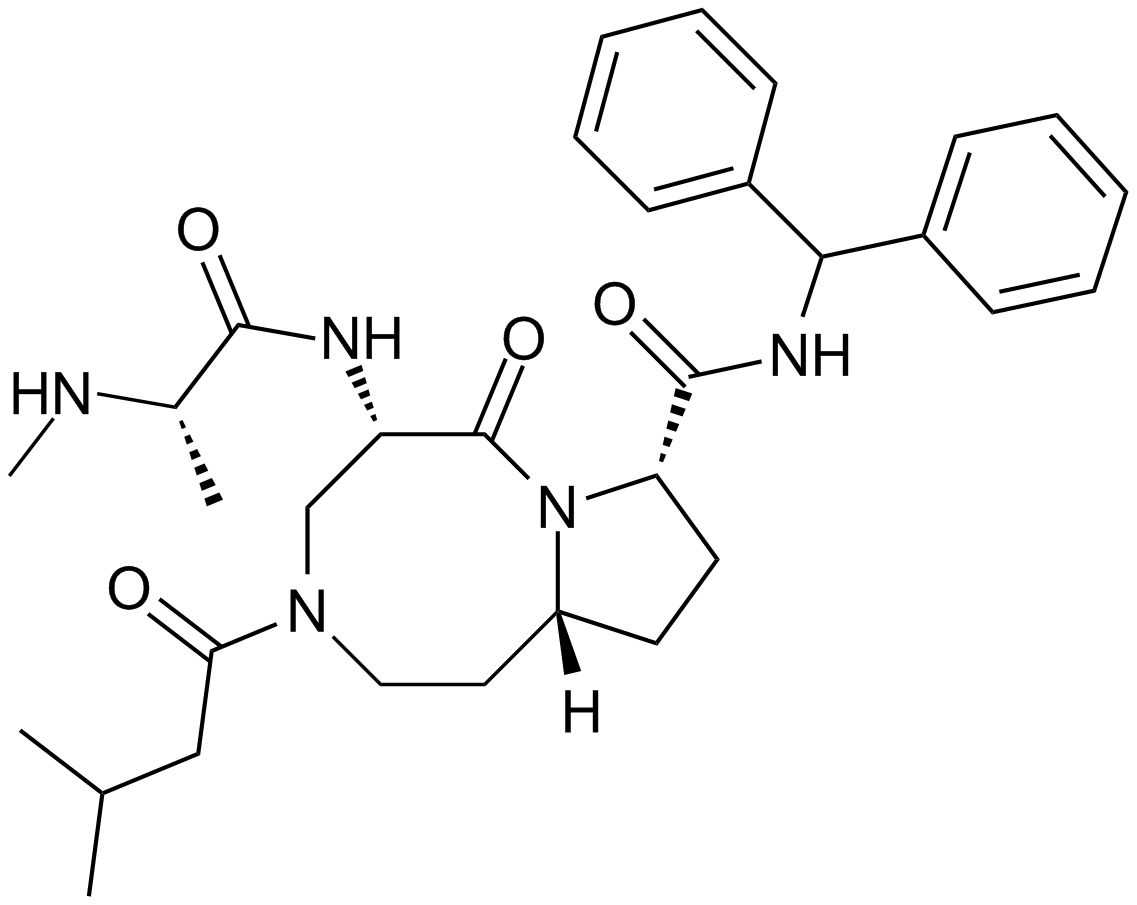
-
GC15870
AT7519
AT7519 (AT7519M) como un potente inhibidor de las CDK, con IC50 de 210, 47, 100, 13, 170 y <10 nM para CDK1, CDK2, CDK4 a CDK6 y CDK9, respectivamente.
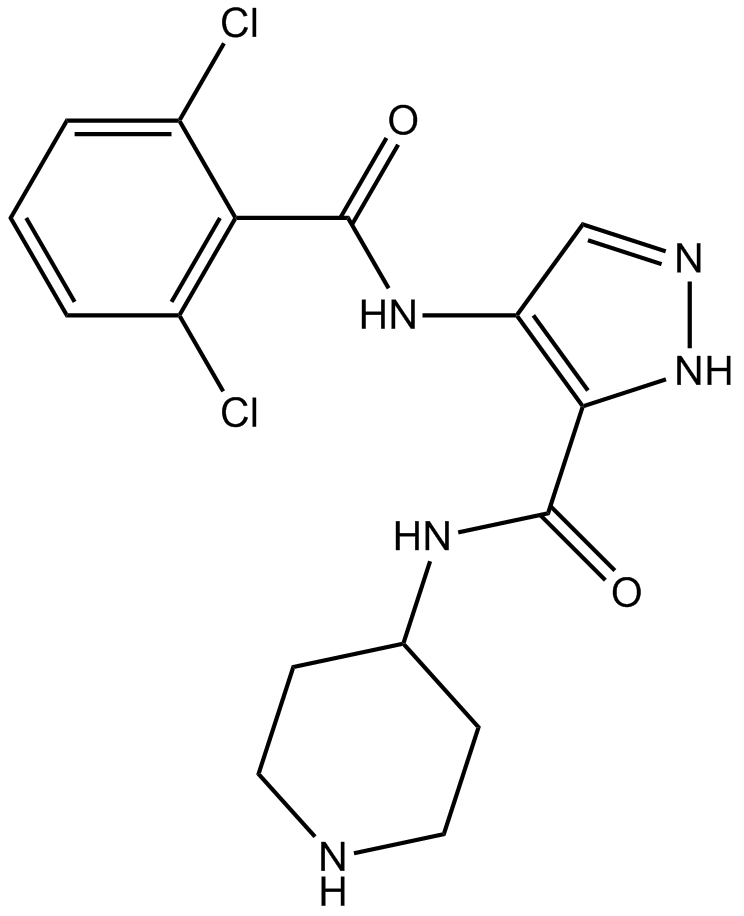
-
GC13998
AT7519 Hydrochloride
A Cdk inhibitor
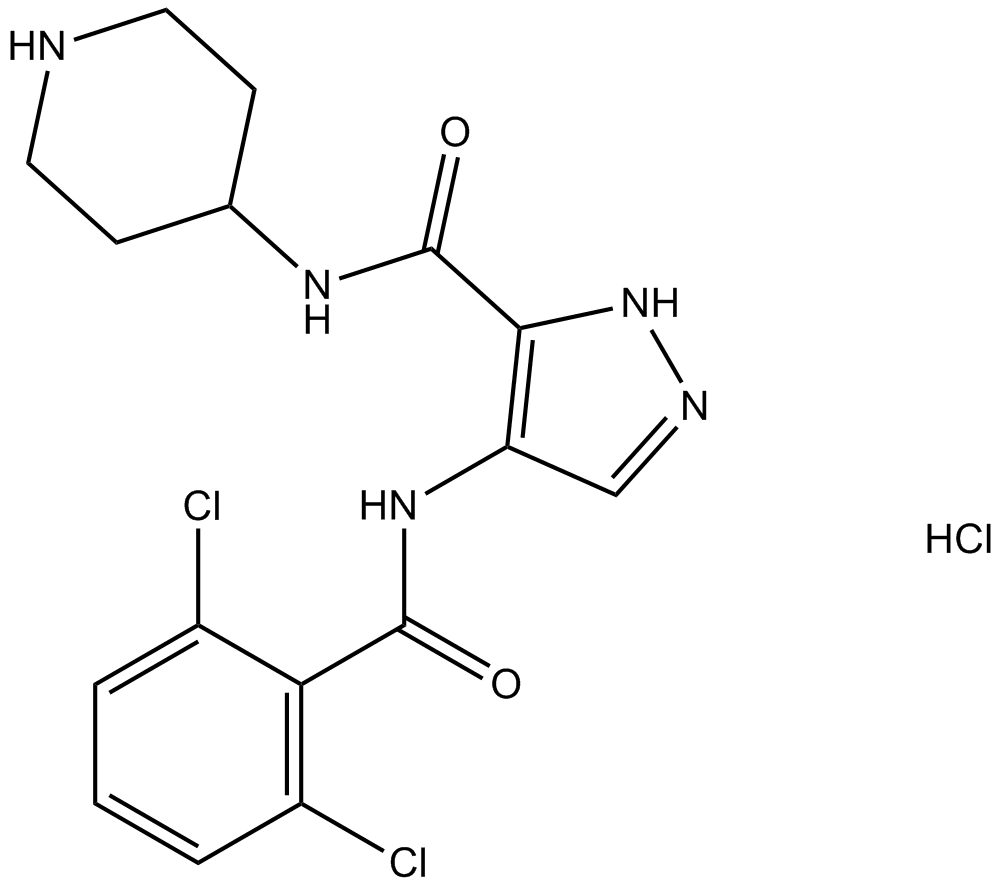
-
GC10638
AT9283
A broad spectrum kinase inhibitor
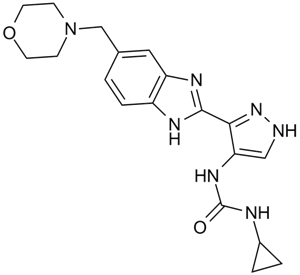
-
GC18133
ATB-346
ATB-346 (ATB-346), un fÁrmaco antiinflamatorio no esteroideo activo por vÍa oral (AINE), inhibe la ciclooxigenasa-1 y 2 (COX-1 y 2).
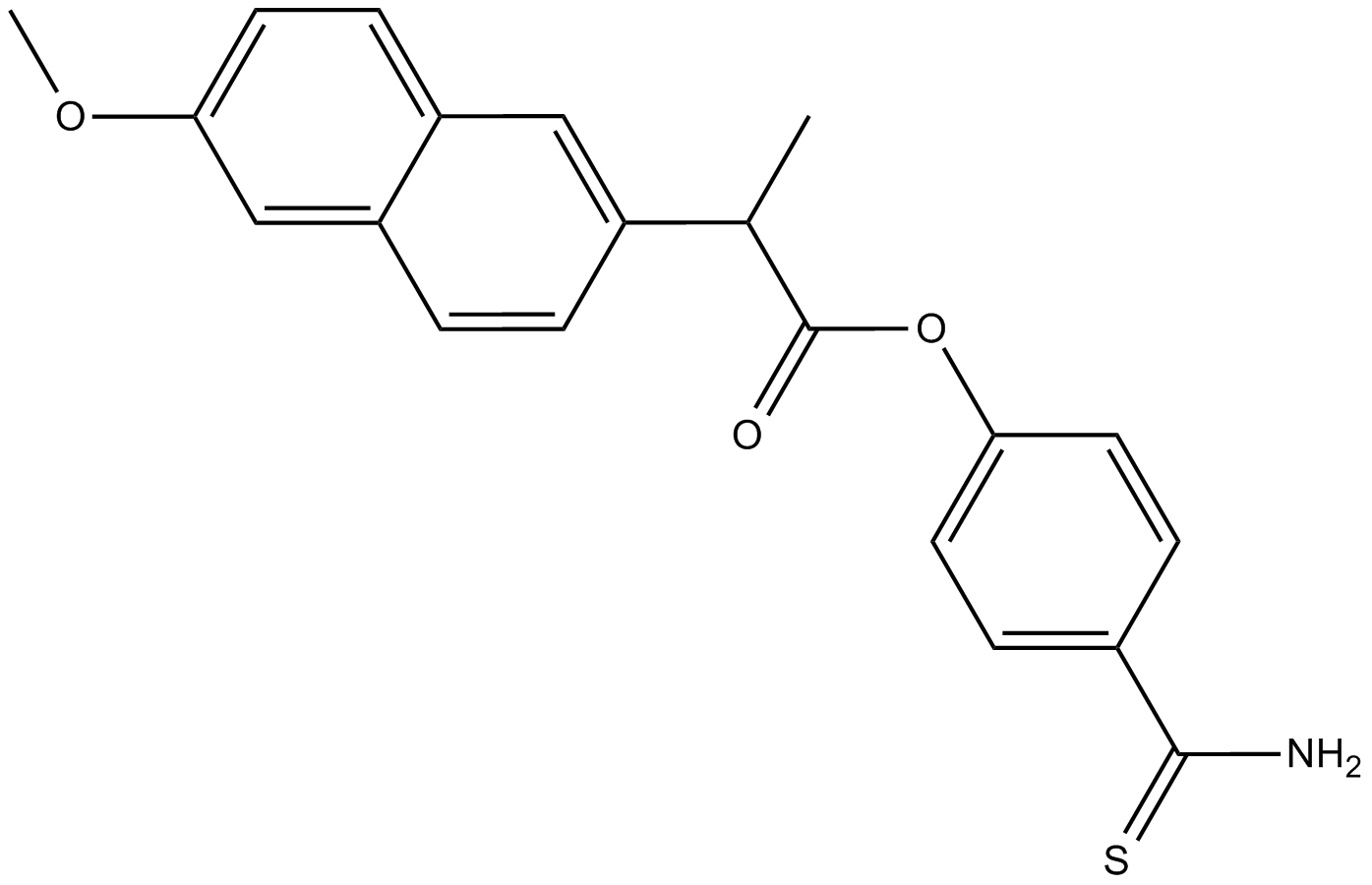
-
GC32704
Atezolizumab (MPDL3280A)
Atezolizumab (MPDL3280A) es un anticuerpo monoclonal humanizado selectivo de tipo IgG1 contra el ligando 1 de muerte programada (PD-L1), utilizado en la investigación del cáncer.

-
GC62499
ATH686
ATH686 es un inhibidor de FLT3 potente, selectivo y competitivo con ATP. ATH686 se dirige a la actividad de la proteÍna quinasa mutante FLT3 e inhibe la proliferaciÓn de células que albergan mutantes FLT3 a través de la inducciÓn de la apoptosis y la inhibiciÓn del ciclo celular. ATH686 tiene efectos antileucémicos.
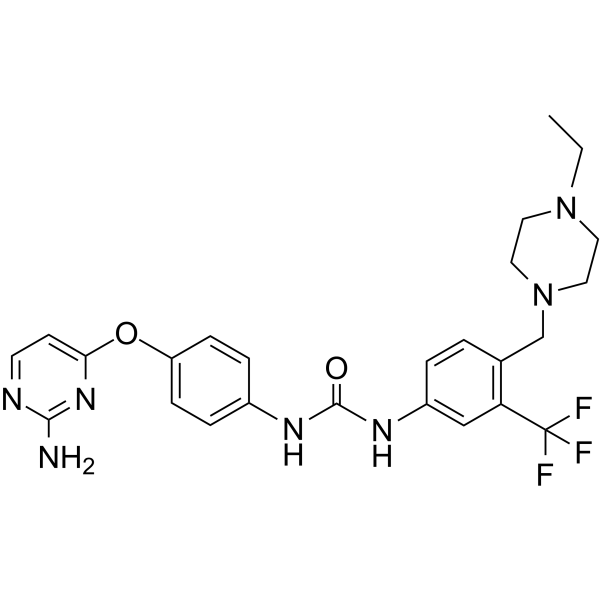
-
GC46892
ATRA-BA Hybrid
A prodrug form of all-trans retinoic acid and butyric acid

-
GN10394
Atractylenolide III

-
GC15878
Atractyloside Dipotassium Salt
Inhibitor of ADP/ATP translocases
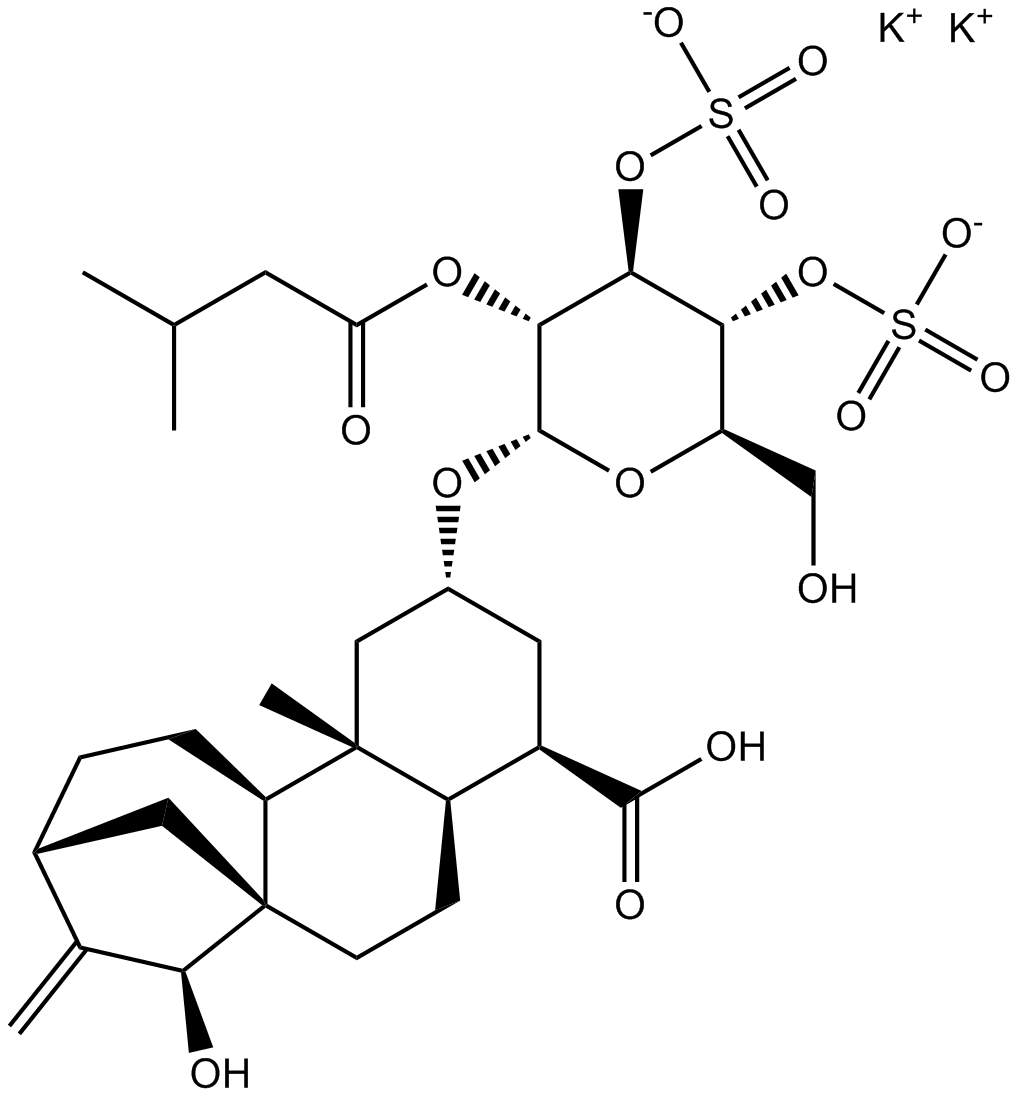
-
GC39699
Aurintricarboxylic acid
El Ácido aurintricarboxÍlico es un antagonista alostérico de potencia nanomolar con selectividad hacia los P2X1R y P2X3R sensibles a αβ-metileno-ATP, con IC50 de 8,6 nM y 72,9 nM para rP2X1R y rP2X3R, respectivamente.
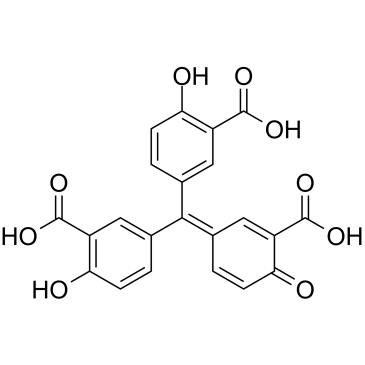
-
GC46895
Aurintricarboxylic Acid (ammonium salt)
A protein synthesis inhibitor with diverse biological activities

-
GC13332
Aurora A Inhibitor I
A potent and selective inhibitor of Aurora A kinase

-
GC15295
AUY922 (NVP-AUY922)
An Hsp90 inhibitor
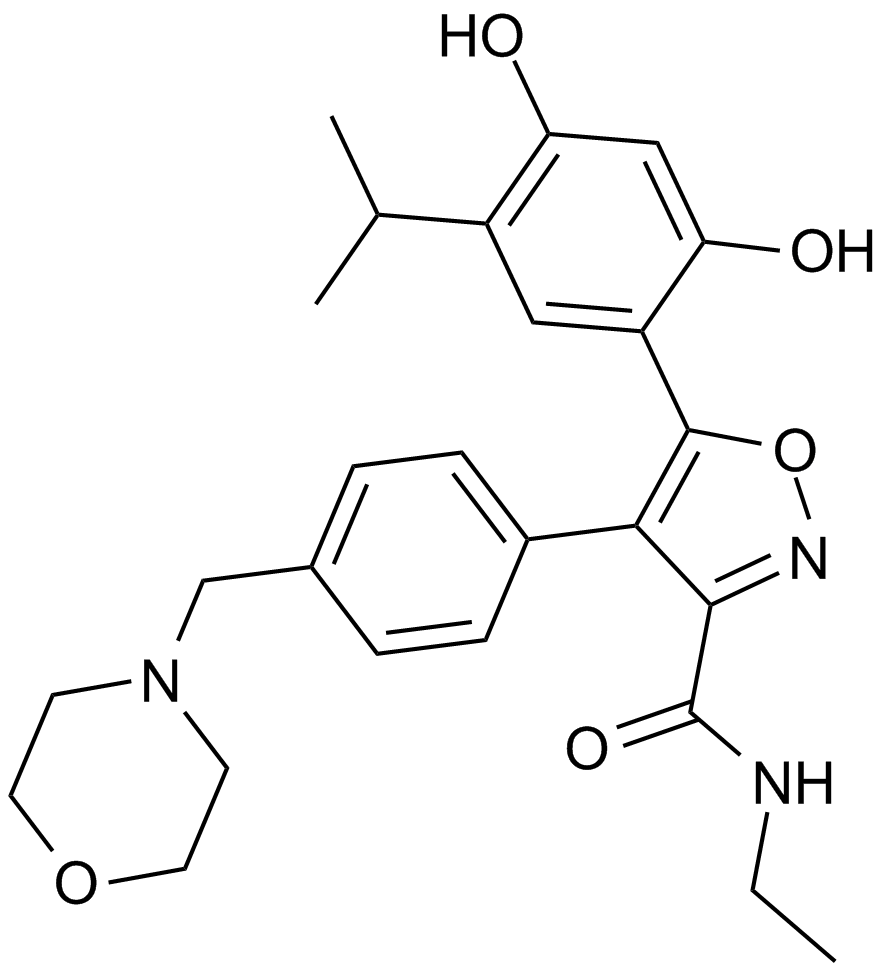
-
GC31719
Avelumab (Anti-Human PD-L1, Human Antibody)
Avelumab (Anti-Human PD-L1, Human Antibody) es un anticuerpo monoclonal IgG1 anti-PD-L1 completamente humano con una potencial citotoxicidad mediada por células dependiente de anticuerpos.

-
GC42880
Avenanthramide-C methyl ester
Avenanthramide-C methyl ester is an inhibitor of NF-κB activation that acts by blocking the phosphorylation of IKK and IκB (IC50 ~ 40 μM).

-
GC35440
AX-024
AX-024 es un inhibidor primero en su clase disponible por vÍa oral de la interacciÓn TCR-Nck que inhibe selectivamente la activaciÓn de células T desencadenada por TCR con un IC50 ~ 1 nM.
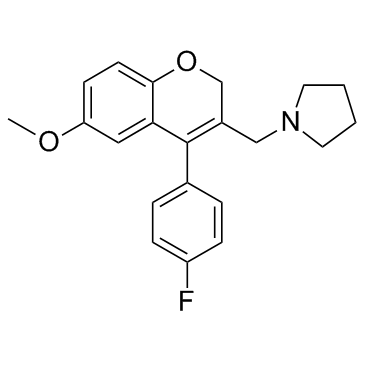
-
GC19046
AX-024 hydrochloride
El clorhidrato de AX-024 es un inhibidor primero en su clase disponible por vÍa oral de la interacciÓn TCR-Nck que inhibe selectivamente la activaciÓn de células T desencadenada por TCR con un IC50 ~1 nM.
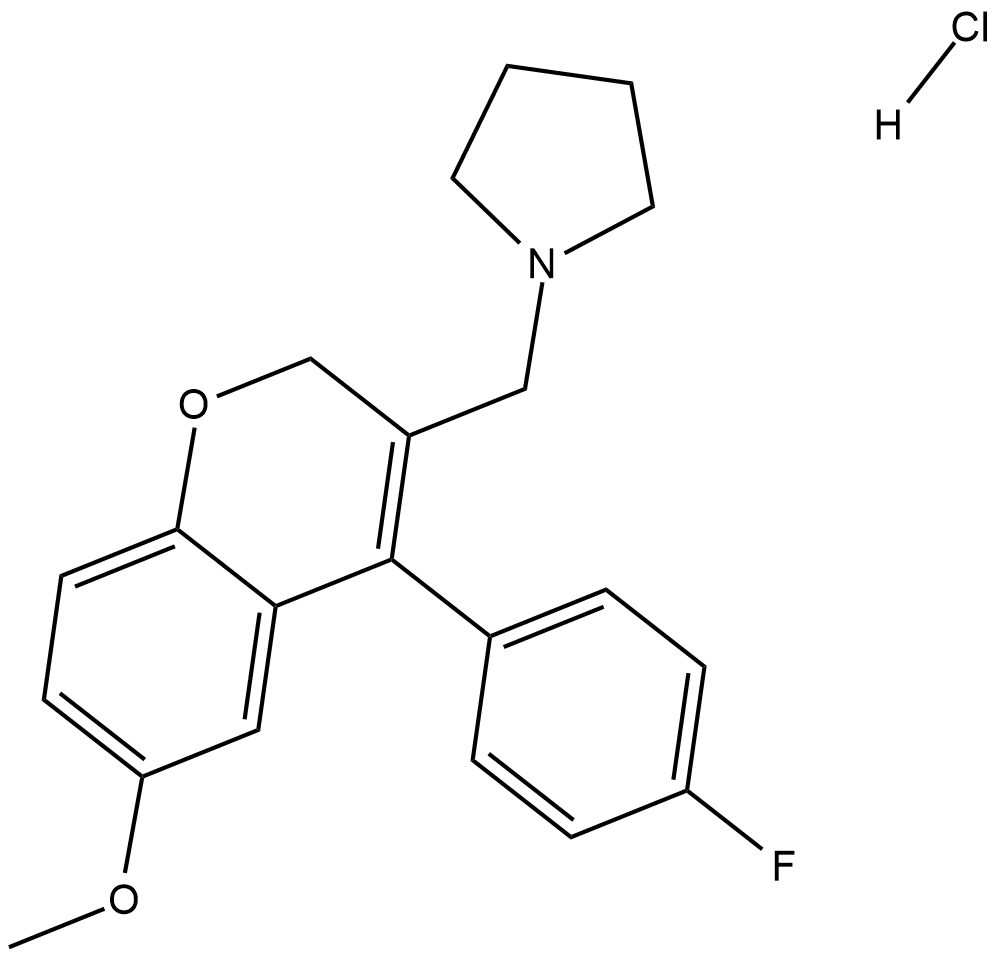
-
GC17045
AXL1717
A potent and selective inhibitor of IGF-1R
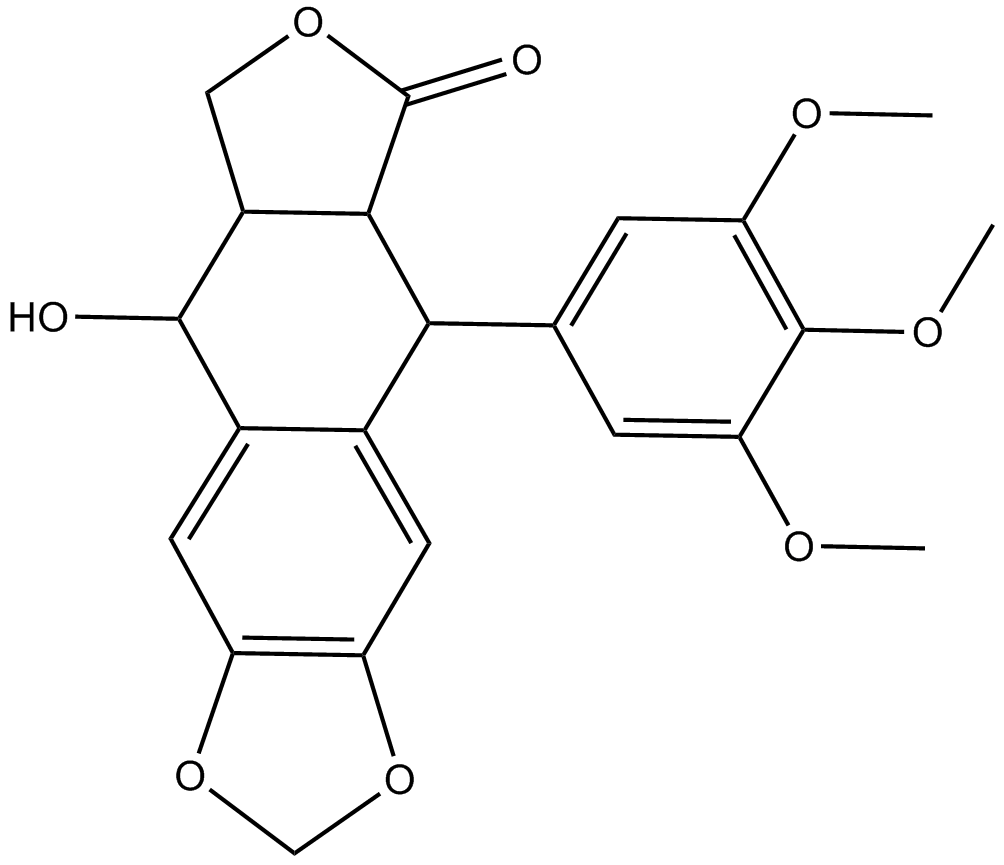
-
GC15055
AZ 628
AZ 628 es un inhibidor de la cinasa pan-Raf con IC50 de 105, 34 y 29 nM para B-Raf, B-RafV600E y c-Raf-1, respectivamente.

-
GC13433
AZ 960
A JAK2 inhibitor
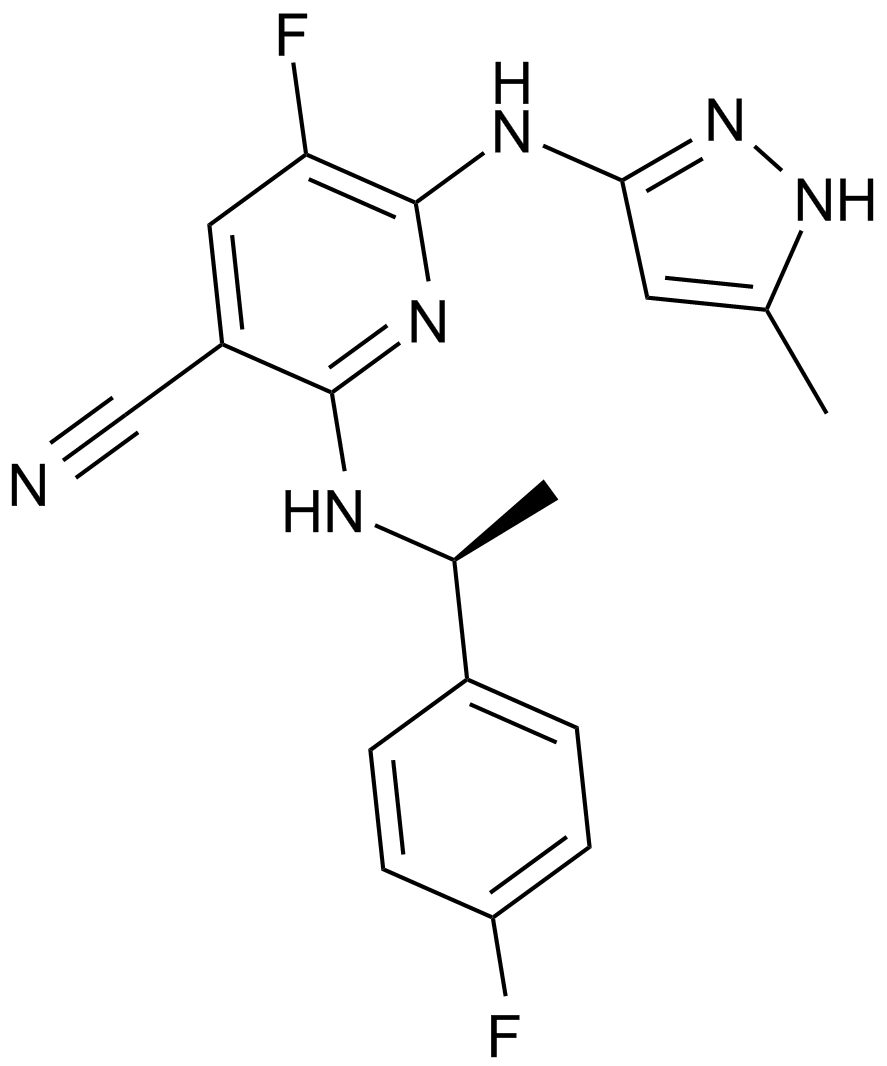
-
GC46901
Azadirachtin
La azadiractina, uno de los insecticidas botÁnicos mÁs prometedores, se usa ampliamente para el control de plagas.

-
GC15033
Azathioprine
La azatioprina (BW 57-322) es un agente inmunosupresor activo por vÍa oral.
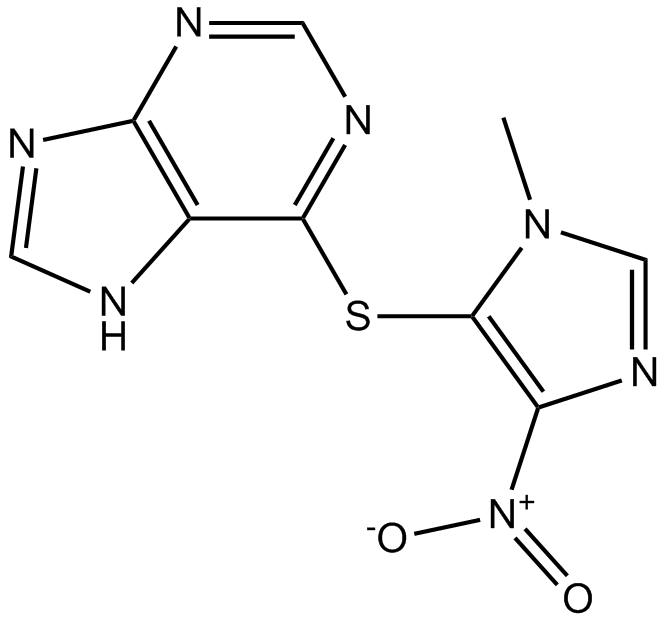
-
GC48971
AZD 1152 (hydrochloride)
A prodrug for a potent Aurora B inhibitor

-
GC18566
AZD 3147
AZD 3147 es un potente inhibidor dual selectivo, activo por vía oral, de mTORC1 y mTORC2 con un valor IC50 de 1,5 nM. AZD 3147 también tiene un efecto selectivo en PI3K.
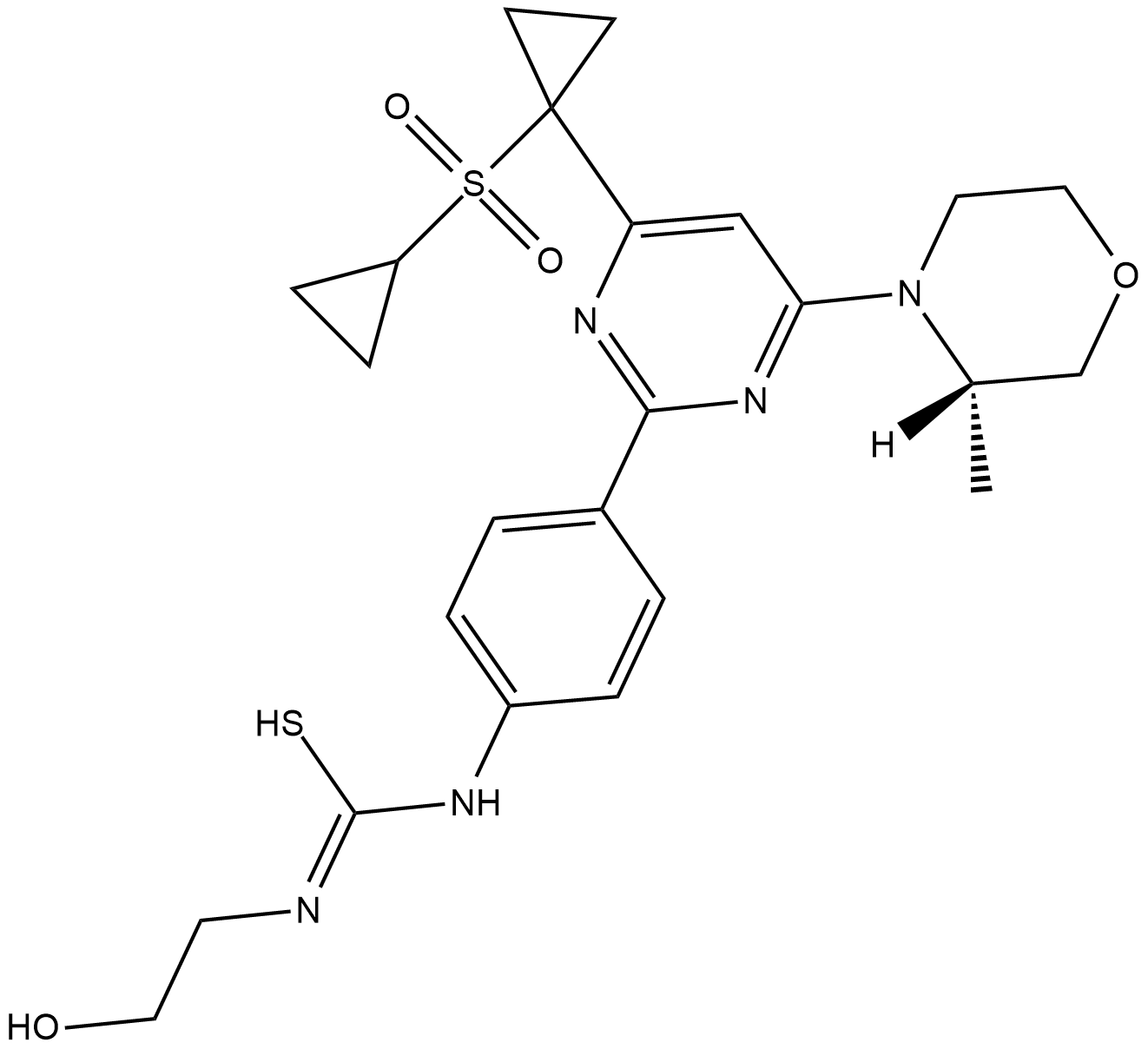
-
GC50109
AZD 5582 dihydrochloride
El diclorhidrato de AZD 5582 es un antagonista de las proteínas inhibidoras de la apoptosis (IAP), que se une a los dominios BIR3 cIAP1, cIAP2 y XIAP con IC50 de 15, 21 y 15 nM, respectivamente. AZD5582 induce la apoptosis.
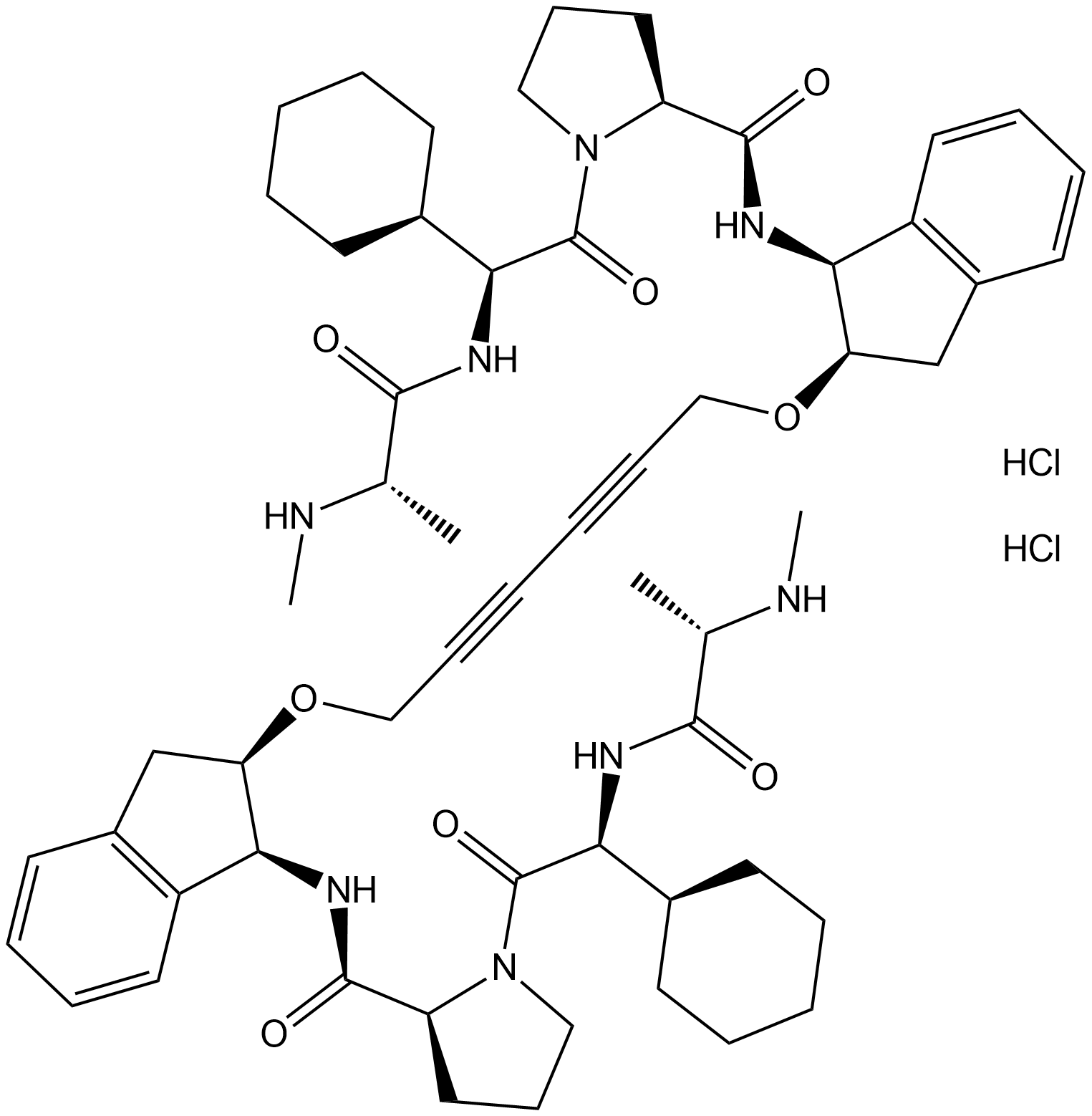
-
GC33247
AZD-5991
AZD-5991 es un inhibidor de Mcl-1 potente y selectivo con una IC50 de 0,7 nM en el ensayo FRET y una Kd de 0,17 nM en el ensayo de resonancia de plasmones superficiales (SPR).
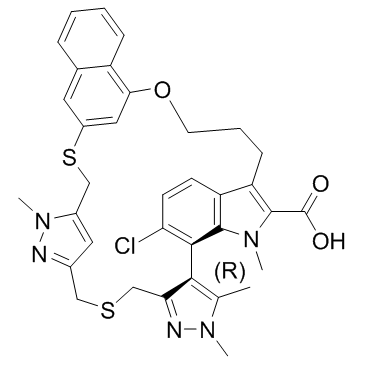
-
GC33283
AZD-5991 Racemate
El racemato AZD-5991 es el racemato de AZD-5991. El racemato AZD-5991 es un inhibidor de Mcl-1 con una IC50 de <3 nM en el ensayo FRET.
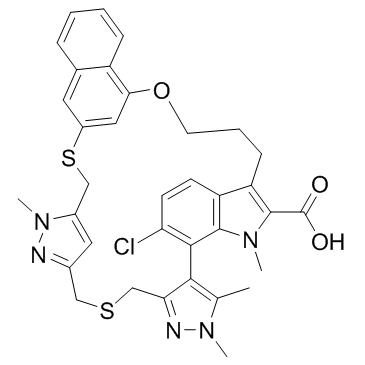
-
GC33239
AZD-5991 S-enantiomer
El enantiómero S de AZD-5991 es el enantiómero menos activo de AZD-5991. El enantiómero S de AZD-5991 es un inhibidor de Mcl-1 con una IC50 de 6,3 μM en el ensayo FRET y una Kd de 0,98 μM en el ensayo de resonancia de plasmón superficial (SPR).
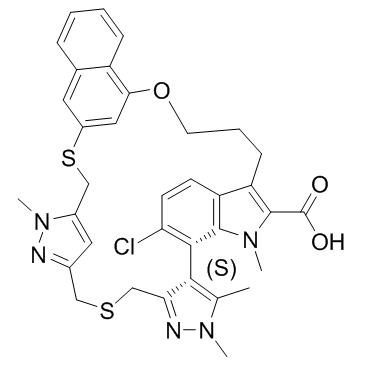
-
GC64938
AZD-7648
AZD-7648 es un potente inhibidor selectivo de DNA-PK activo por vÍa oral con una IC50 de 0,6 nM. AZD-7648 induce apoptosis y muestra actividad antitumoral.
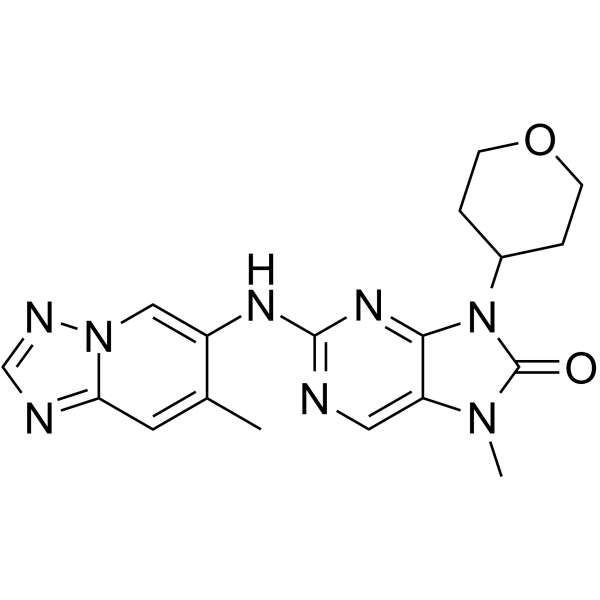
-
GC12660
AZD1208
A pan-Pim kinase inhibitor
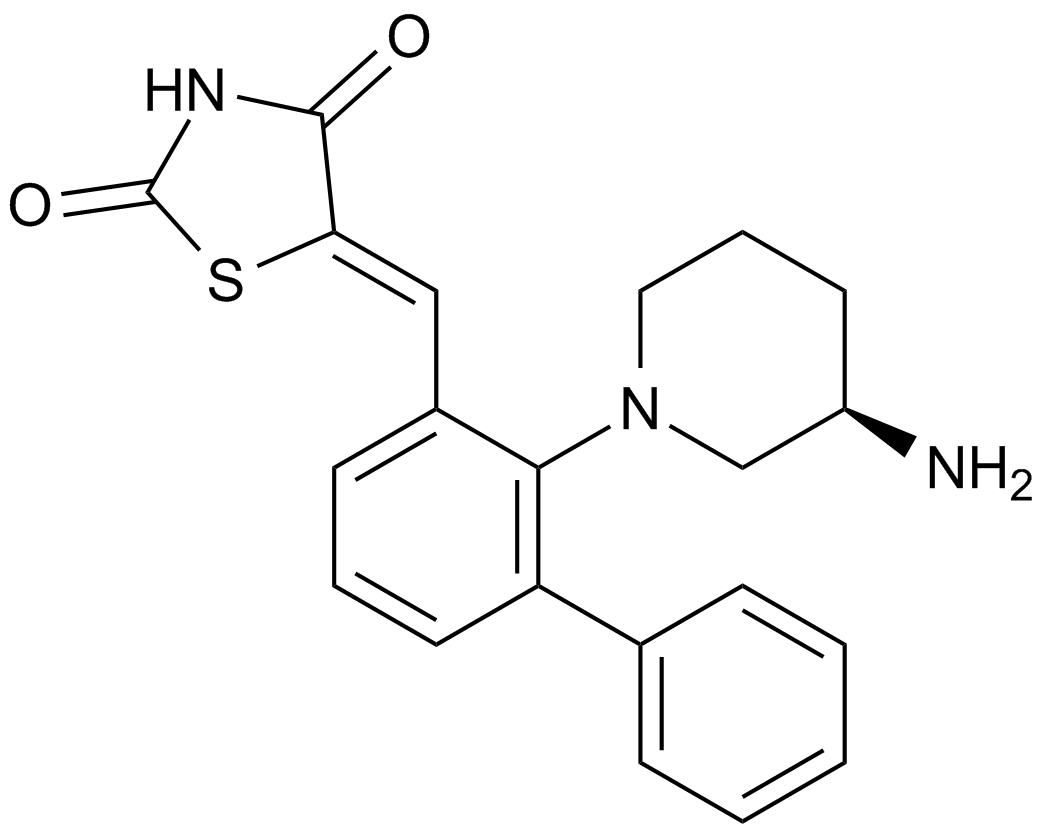
-
GC13029
AZD2014
AZD2014 (AZD2014) es un inhibidor mTOR competitivo de ATP con una IC50 de 2,81 nM. AZD2014 inhibe los complejos mTORC1 y mTORC2.
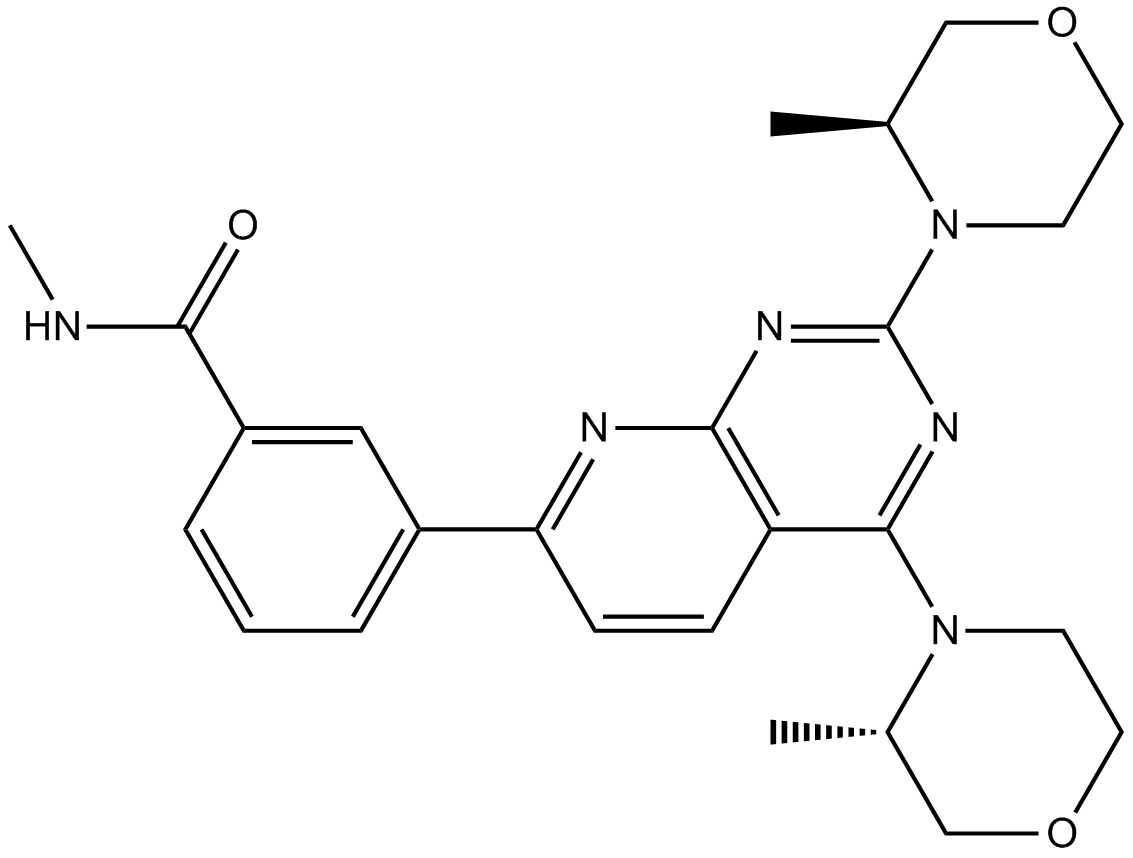
-
GC33255
AZD4320
AZD4320 es un nuevo inhibidor dual BCL2/BCLxL que imita BH3 con IC50 de 26 nM, 17 nM y 170 nM para células KPUM-MS3, KPUM-UH1 y STR-428, respectivamente.
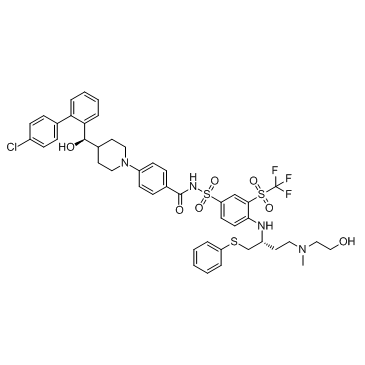
-
GC19050
AZD5582
AZD5582 es un antagonista de las proteÍnas inhibidoras de la apoptosis (IAP), que se une a los dominios BIR3 cIAP1, cIAP2 y XIAP con IC50 de 15, 21 y 15 nM, respectivamente. AZD5582 induce la apoptosis.
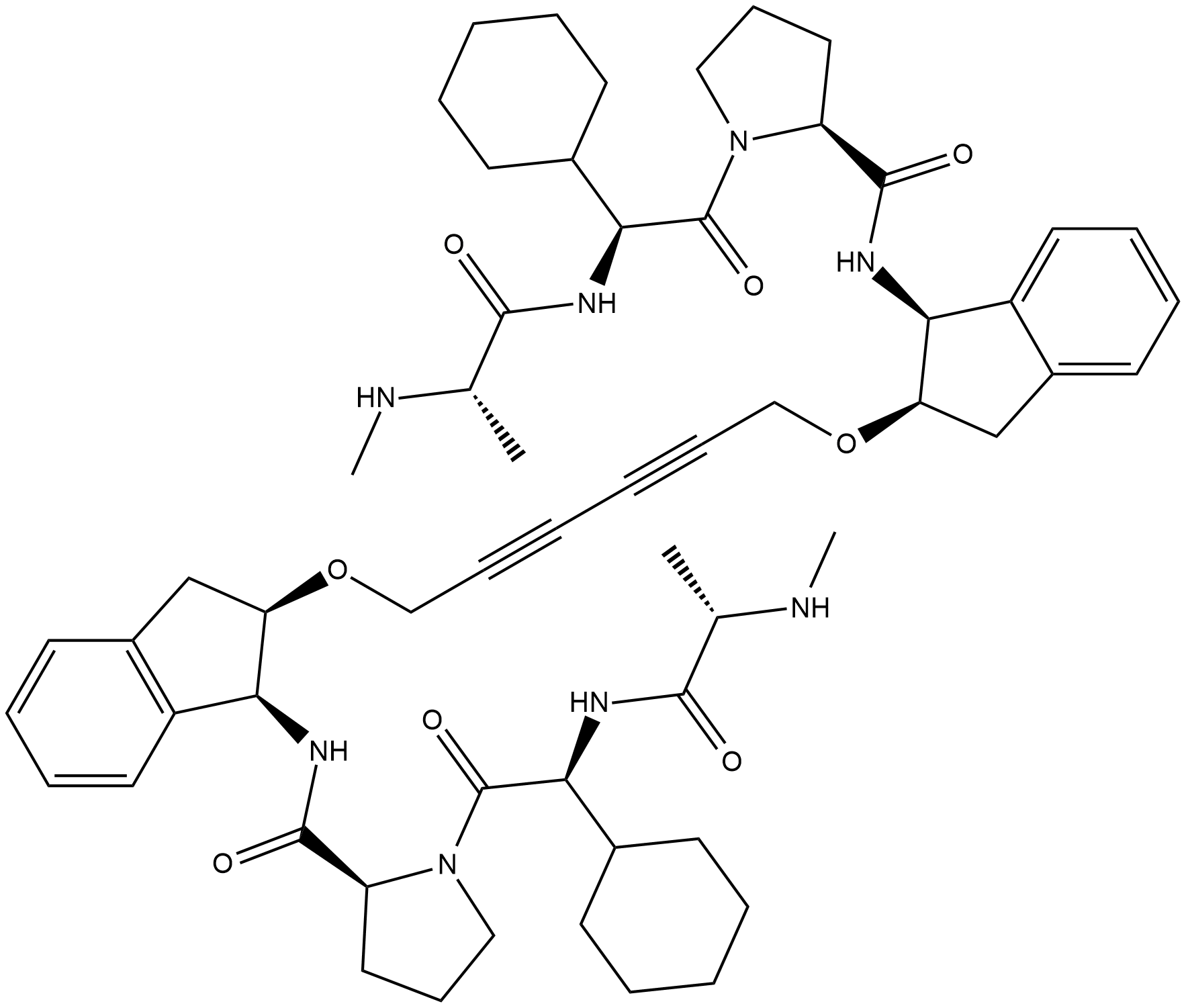
-
GC16380
AZD8055
Inhibidor de MTOR
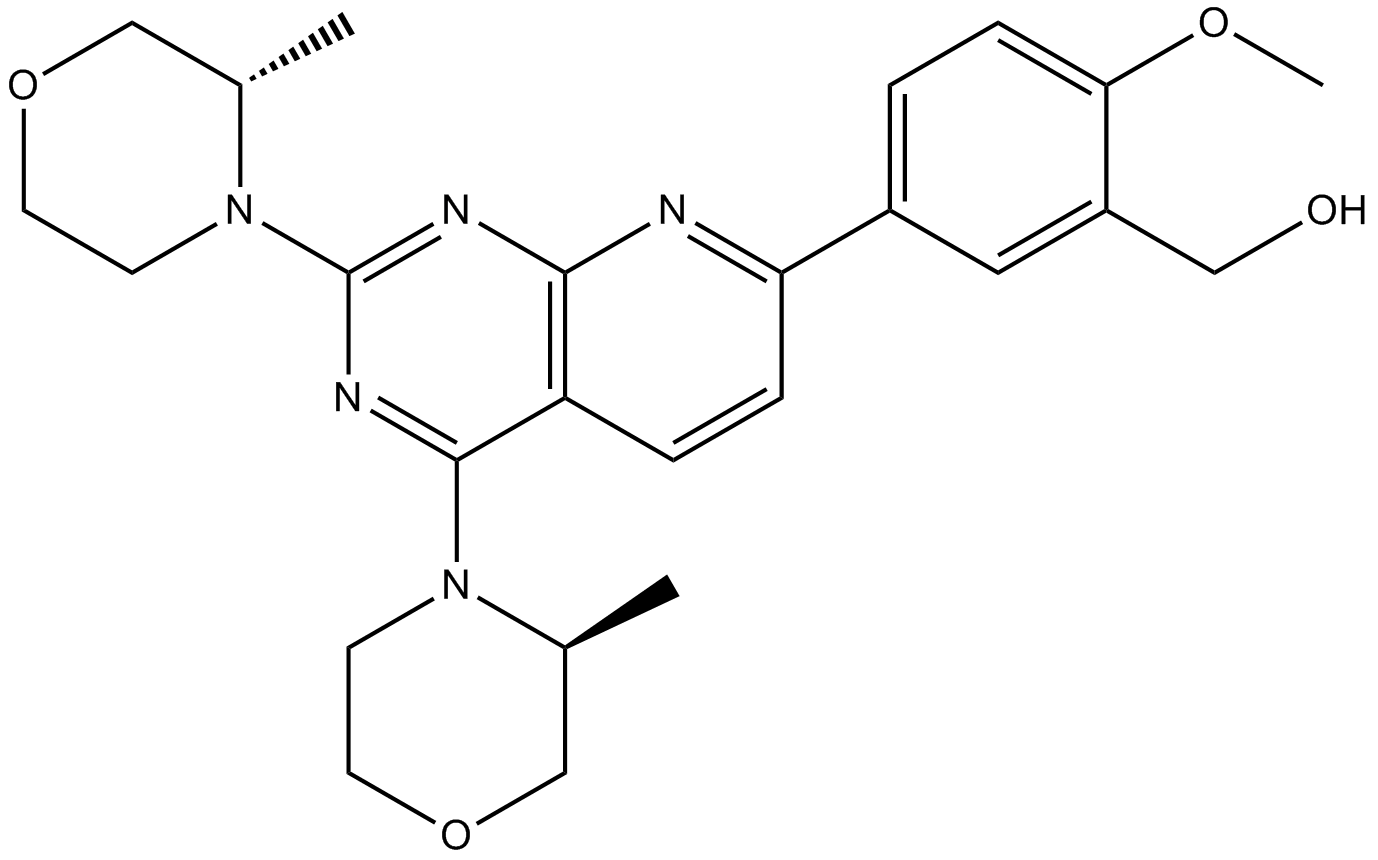
-
GC19054
Azoramide
La azoramida es un potente modulador de molécula pequeÑa activo por vÍa oral de la respuesta de proteÍna desplegada (UPR).
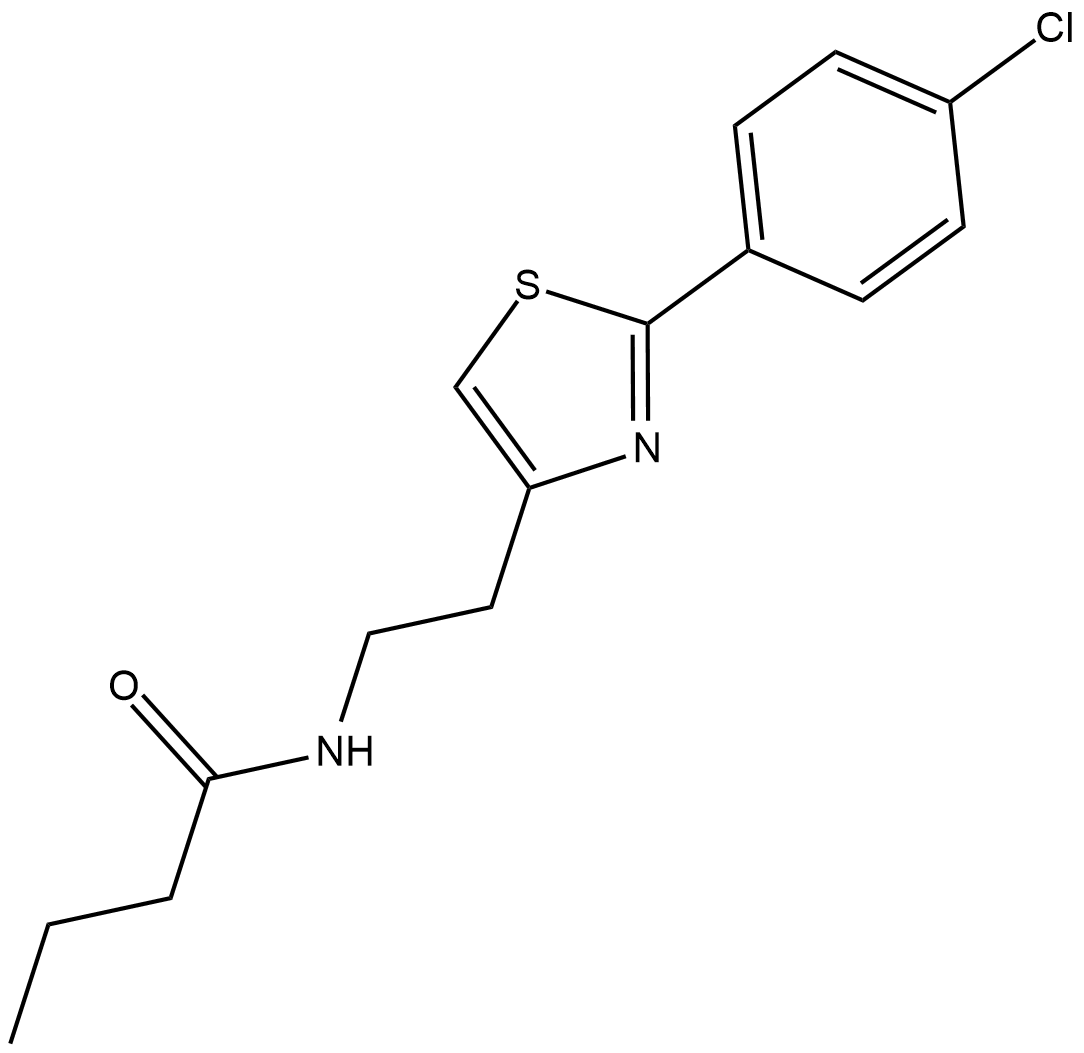
-
GC46904
Azoxystrobin
La azoxistrobina es un fungicida de β-metoxiacrilato de amplio espectro.

-
GC60616
AZT triphosphate
El trifosfato de AZT (3'-azido-3'-desoxitimidina-5'-trifosfato) es un metabolito trifosfato activo de la zidovudina (AZT).
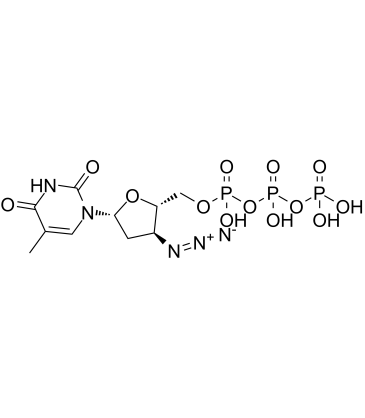
-
GC60617
AZT triphosphate TEA
AZT trifosfato TEA (3'-azido-3'-desoxitimidina-5'-trifosfato TEA) es un metabolito trifosfato activo de zidovudina (AZT).
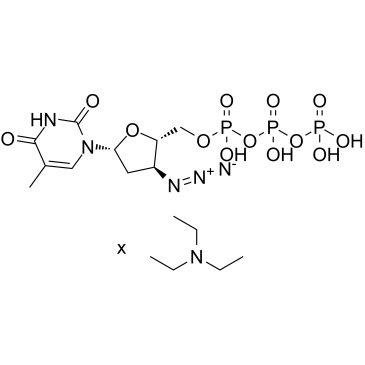
-
GC35458
Bacopaside II
Bacopaside II, un extracto de la hierba medicinal Bacopa monnieri, bloquea el canal de agua Aquaporin-1 (AQP1) y perjudica la migraciÓn de las células que expresan AQP1. Bacopaside II induce la detenciÓn del ciclo celular y la apoptosis.
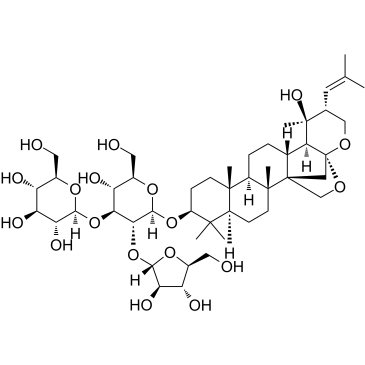
-
GC34263
Bak BH3
Bak BH3 se deriva del dominio BH3 de Bak, puede antagonizar la funciÓn de Bcl-xL en las células.

-
GC52344
Bak BH3 (72-87) (human) (trifluoroacetate salt)
A Bak-derived peptide

-
GC12053
BAM7
A direct activator of Bax
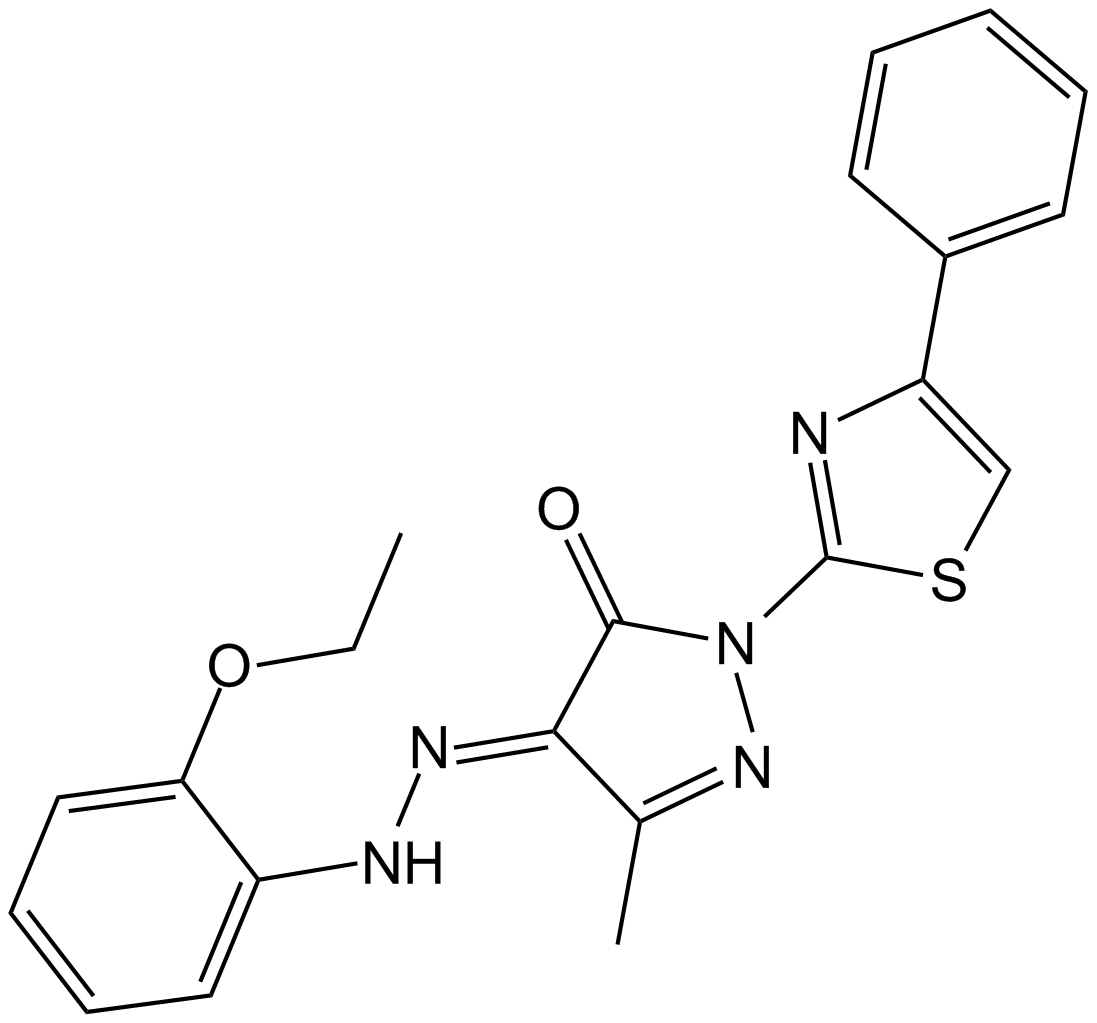
-
GN10507
Baohuoside I
Baohuoside I, a flavonoid isolated from Epimedium koreanum Nakai, acts as an inhibitor of CXCR4, downregulates CXCR4 expression, induces apoptosis and shows anti-tumor activity.
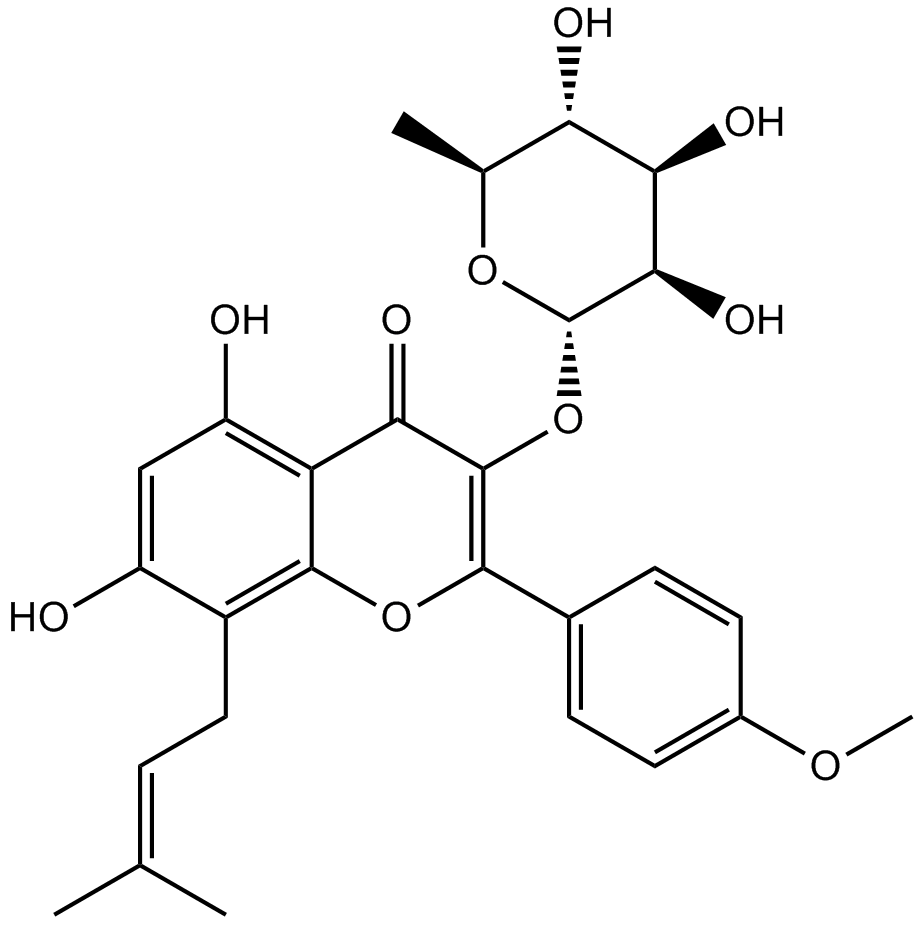
-
GC15371
Bardoxolone
An anti-inflammatory compound that activates Nrf2/ARE signaling
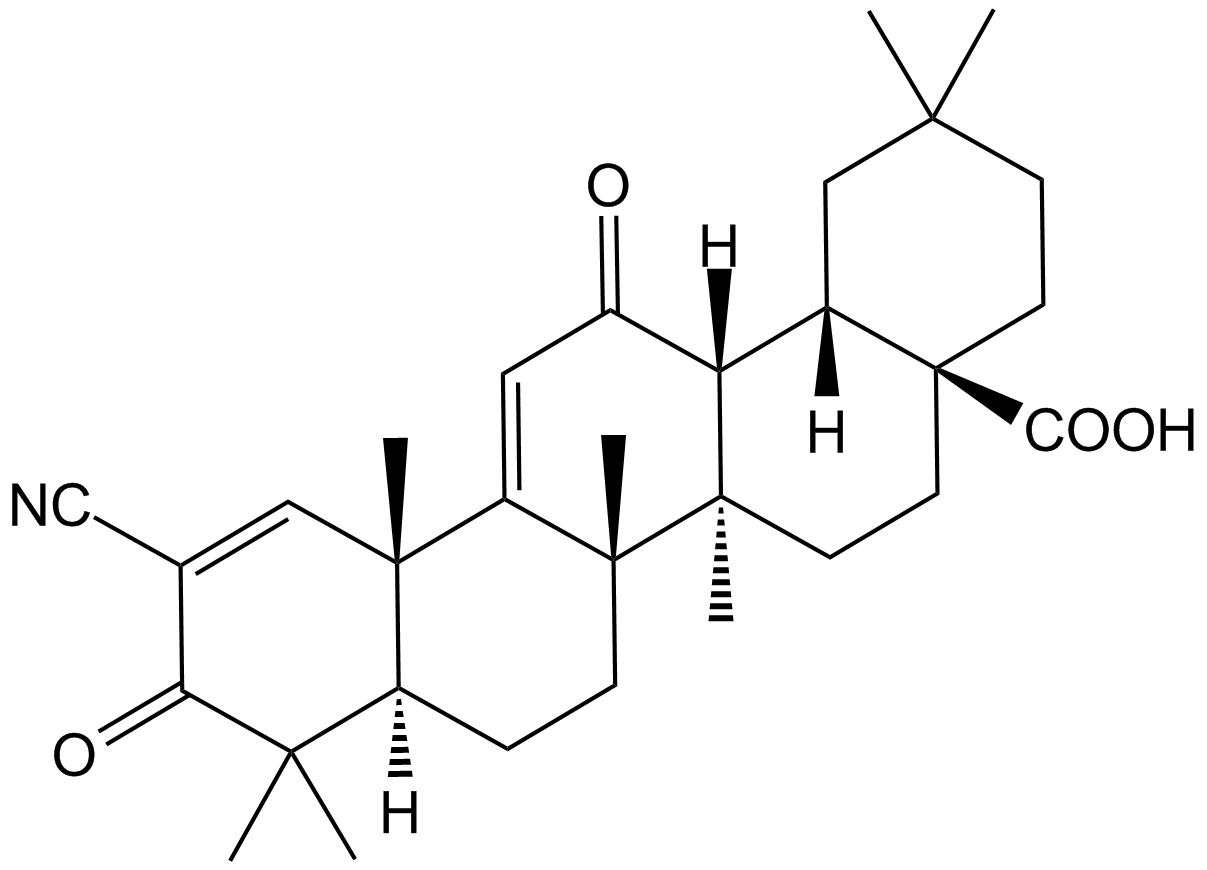
-
GC11572
Bardoxolone methyl
A synthetic triterpenoid with potent anticancer and antidiabetic activity
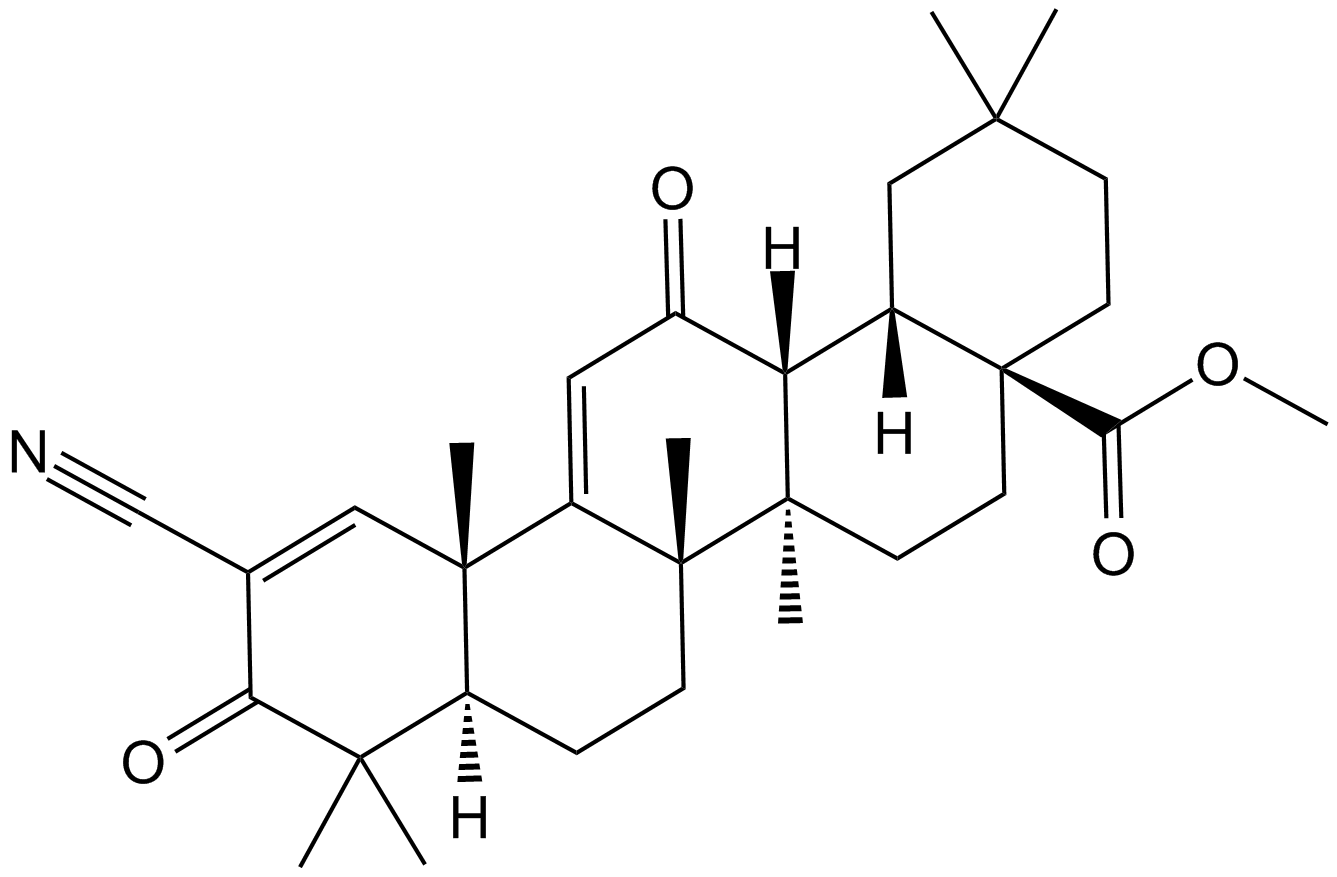
-
GC60620
Batabulin
Batabulin (T138067) es un agente antitumoral que se une de forma covalente y selectiva a un subconjunto de los isotipos de β-tubulina, lo que interrumpe la polimerizaciÓn de los microtÚbulos. La batabulina afecta la morfologÍa celular y conduce a la detenciÓn del ciclo celular y finalmente induce la muerte celular apoptÓtica.
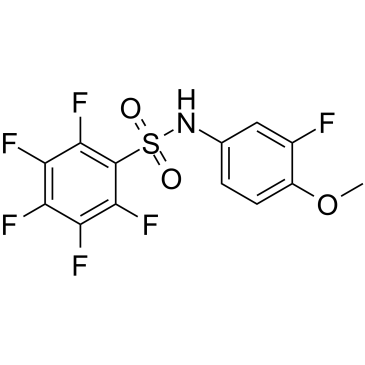
-
GC60621
Batabulin sodium
La batabulina sÓdica (T138067 sÓdica) es un agente antitumoral que se une de forma covalente y selectiva a un subconjunto de los isotipos de β-tubulina, interrumpiendo asÍ la polimerizaciÓn de los microtÚbulos. La batabulina sÓdica afecta la morfologÍa celular y conduce a la detenciÓn del ciclo celular y finalmente induce la muerte celular apoptÓtica.
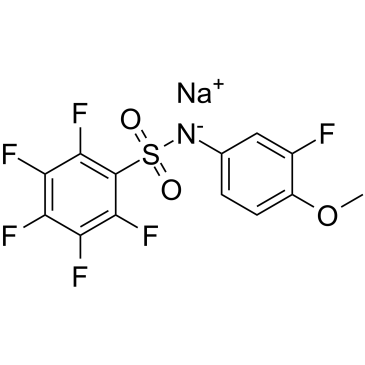
-
GC12763
Bax channel blocker
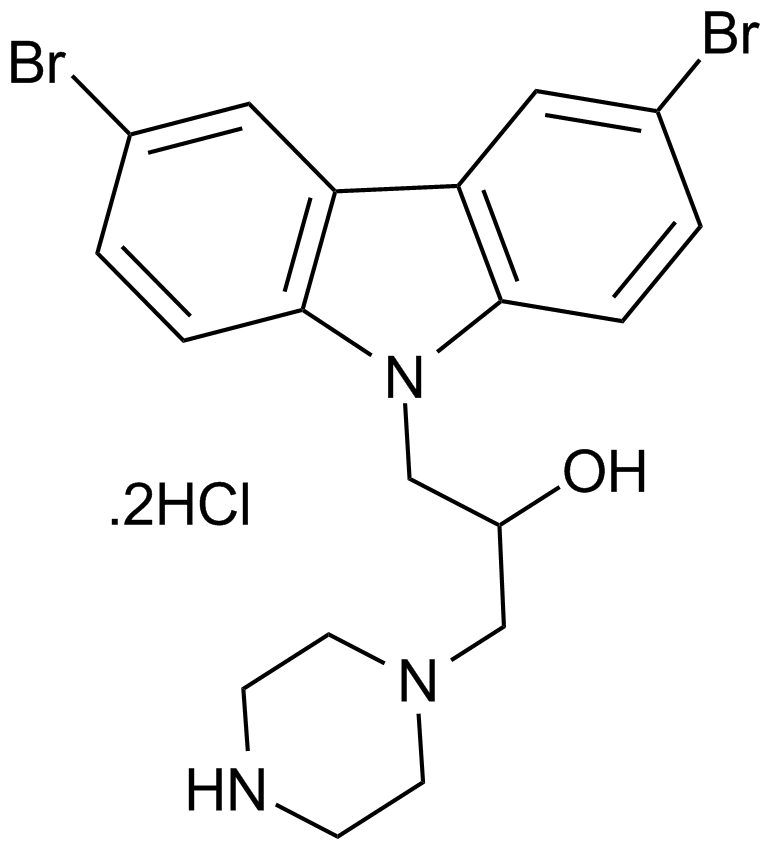
-
GC16023
Bax inhibitor peptide P5
Bax inhibitor

-
GC17195
Bax inhibitor peptide V5
A Bax inhibitor

-
GC52476
Bax Inhibitor Peptide V5 (trifluoroacetate salt)
A Bax inhibitor

-
GC16695
Bax inhibitor peptide, negative control
Peptide inhibit Bax translocation to mitochondria

-
GC10345
Bay 11-7085
BAY 11-7085 (BAY 11-7083) es un inhibidor de la activaciÓn de NF-κB y la fosforilaciÓn de IκBα; estabiliza el IκBα con una IC50 de 10 μM.
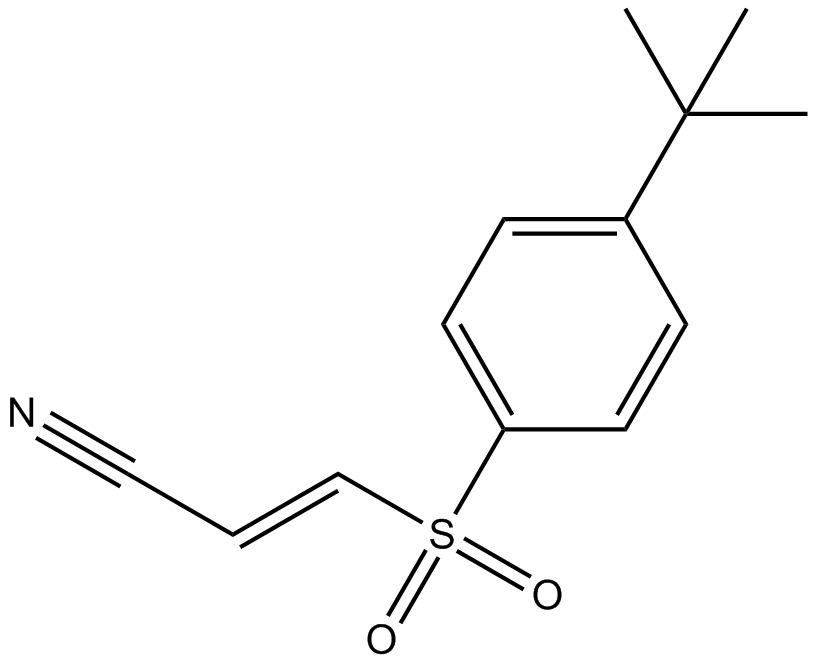
-
GC13035
Bay 11-7821
Un inhibidor selectivo e irreversible de NF-κB.
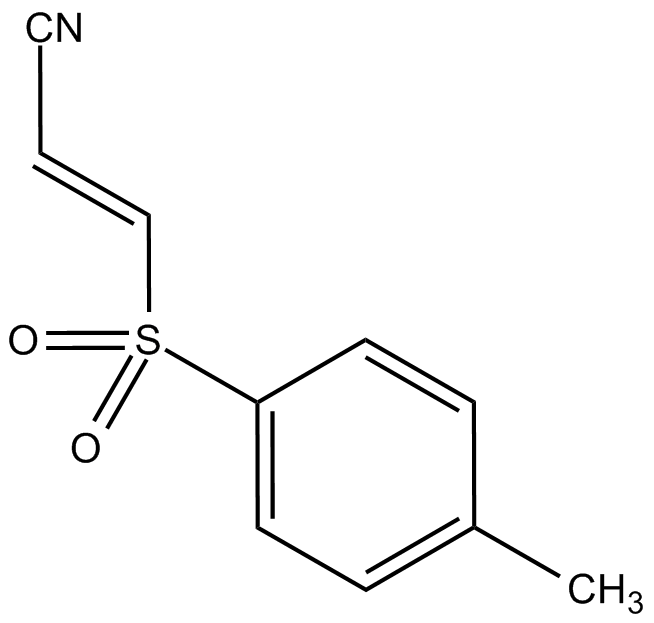
-
GC16389
BAY 61-3606
A Syk inhibitor

-
GC42897
BAY 61-3606 (hydrochloride)
BAY 61-3606 is a cell-permeable, reversible inhibitor of spleen tyrosine kinase (Syk; Ki = 7.5 nM; IC50 = 10 nM).

-
GC12136
BAY 61-3606 dihydrochloride
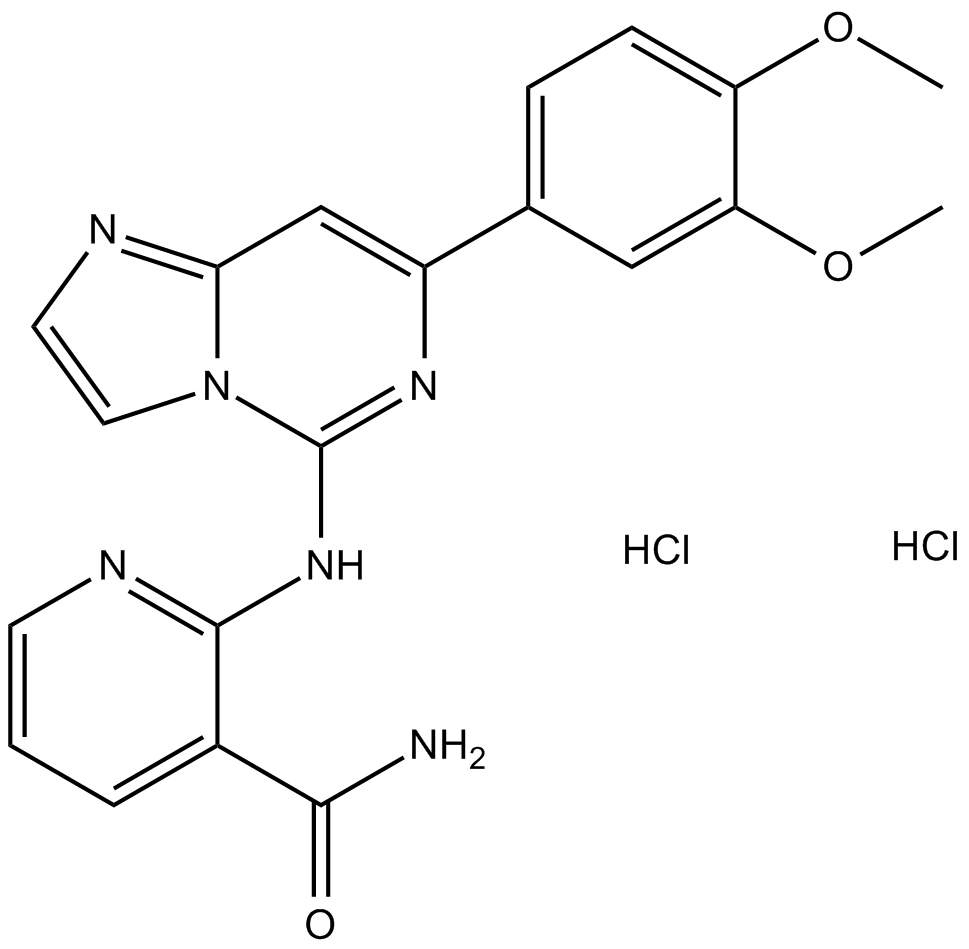
-
GC62164
BAY1082439
BAY1082439 es un inhibidor selectivo de PI3Kα/β/δ biodisponible por vÍa oral. BAY1082439 también inhibe las formas mutadas de PIK3CA. BAY1082439 es muy eficaz para inhibir el crecimiento del cÁncer de prÓstata sin Pten.
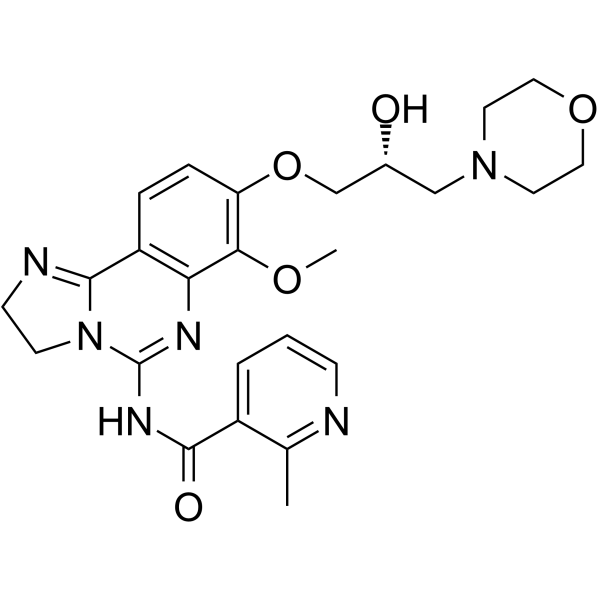
-
GC16516
BCH
BCH (BCH) es un inhibidor selectivo y competitivo del transportador de aminoÁcidos neutros grandes 1 (LAT1) que inhibe significativamente la absorciÓn celular de aminoÁcidos y la fosforilaciÓn de mTOR, lo que induce la supresiÓn del crecimiento del cÁncer y la apoptosis.
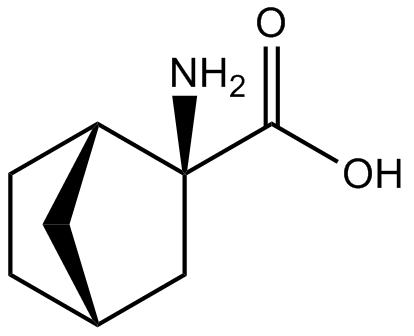
-
GC63325
Bcl-xL antagonist 2
El antagonista 2 de Bcl-xL es un antagonista potente, selectivo y activo por vÍa oral de BCL-XL con una IC50 y una Ki de 0,091 μM y 65 nM, respectivamente. El antagonista 2 de Bcl-xL promueve la apoptosis de las células cancerosas. El antagonista 2 de Bcl-xL tiene potencial para la investigaciÓn de la leucemia linfocÍtica crÓnica (LLC) y el linfoma no Hodgkin (LNH).
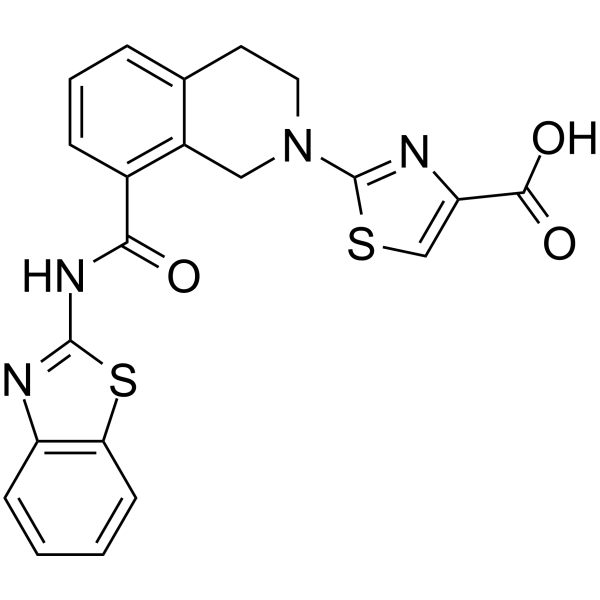
-
GC62599
BCL6-IN-4
BCL6-IN-4 es un potente inhibidor del linfoma 6 de células B (BCL6) con una IC50 de 97 nM. BCL6-IN-4 tiene actividades antitumorales.
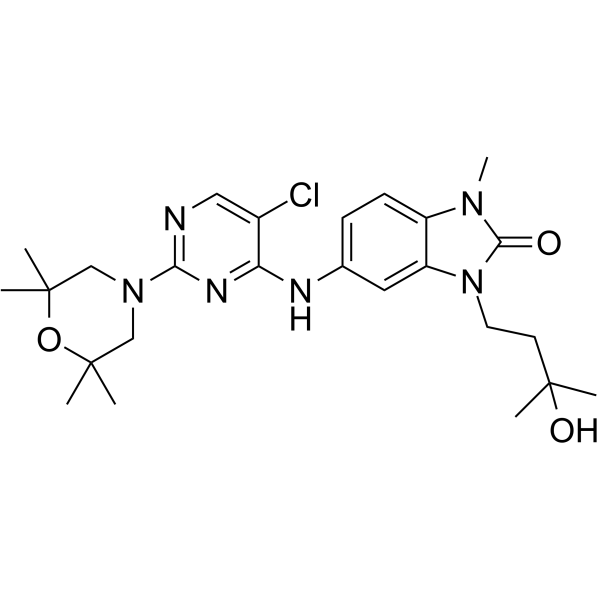
-
GC68012
BCL6-IN-7
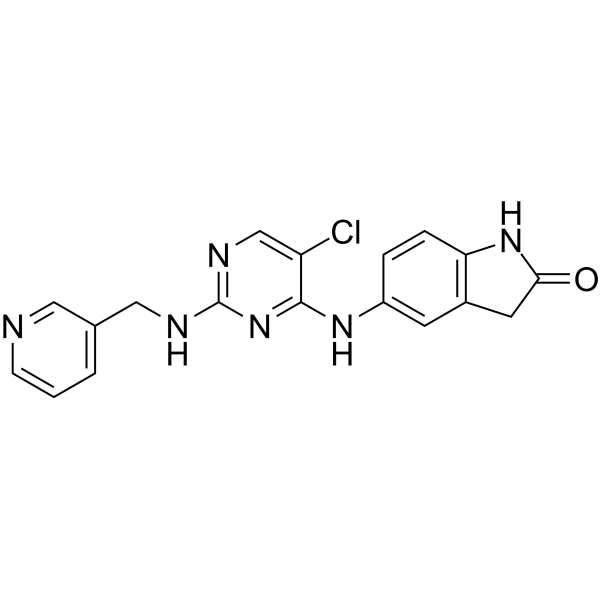
-
GC10721
BDA-366
BDA-366 es un potente antagonista de Bcl2 (Ki = 3,3 nM), que se une al dominio Bcl2-BH4 con alta afinidad y selectividad. BDA-366 induce un cambio conformacional en Bcl2 que anula su funciÓn antiapoptÓtica, convirtiéndolo de una molécula de supervivencia en un inductor de muerte celular. BDA-366 suprime el crecimiento de células de cÁncer de pulmÓn.
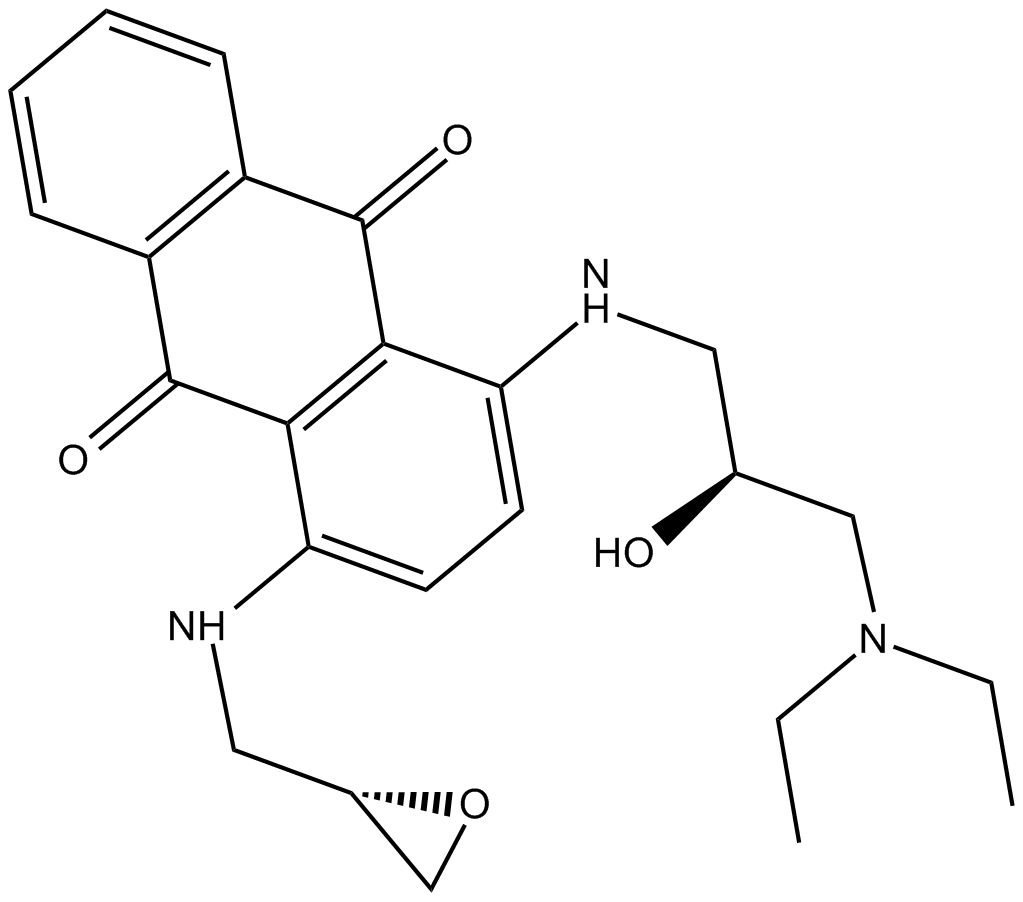
-
GC42912
Becatecarin
La becatecarina es un anÁlogo de la rebecamicina con efectos antitumorales. La becatecarina se intercala en el ADN e inhibe la actividad catalÍtica de las topoisomerasas I/II.

-
GC68369
Belantamab

-
GC65031
Belimumab
Belimumab (LymphoStat B) es un anticuerpo monoclonal IgG1Λ humano que inhibe el factor activador de células B (BAFF).

-
GC49042
Benastatin A
A bacterial metabolite with diverse biological activities

-
GC64354
Bendamustine
La bendamustina (SDX-105 base libre), un anÁlogo de purina, es un agente de entrecruzamiento del ADN. La bendamustina activa la respuesta al estrés por daÑo del ADN y la apoptosis. La bendamustina tiene potentes propiedades alquilantes, anticancerÍgenas y antimetabolitos.
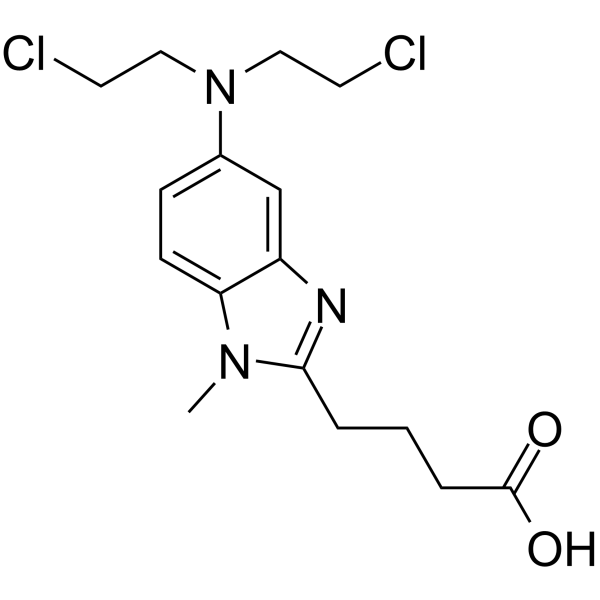
-
GC10744
Bendamustine HCl
Bendamustine HCl (SDX-105), un anÁlogo de purina, es un agente de entrecruzamiento del ADN. Bendamustine HCl activa la respuesta al estrés por daÑo en el ADN y la apoptosis. Bendamustine HCl tiene potentes propiedades alquilantes, anticancerÍgenas y antimetabolitos.
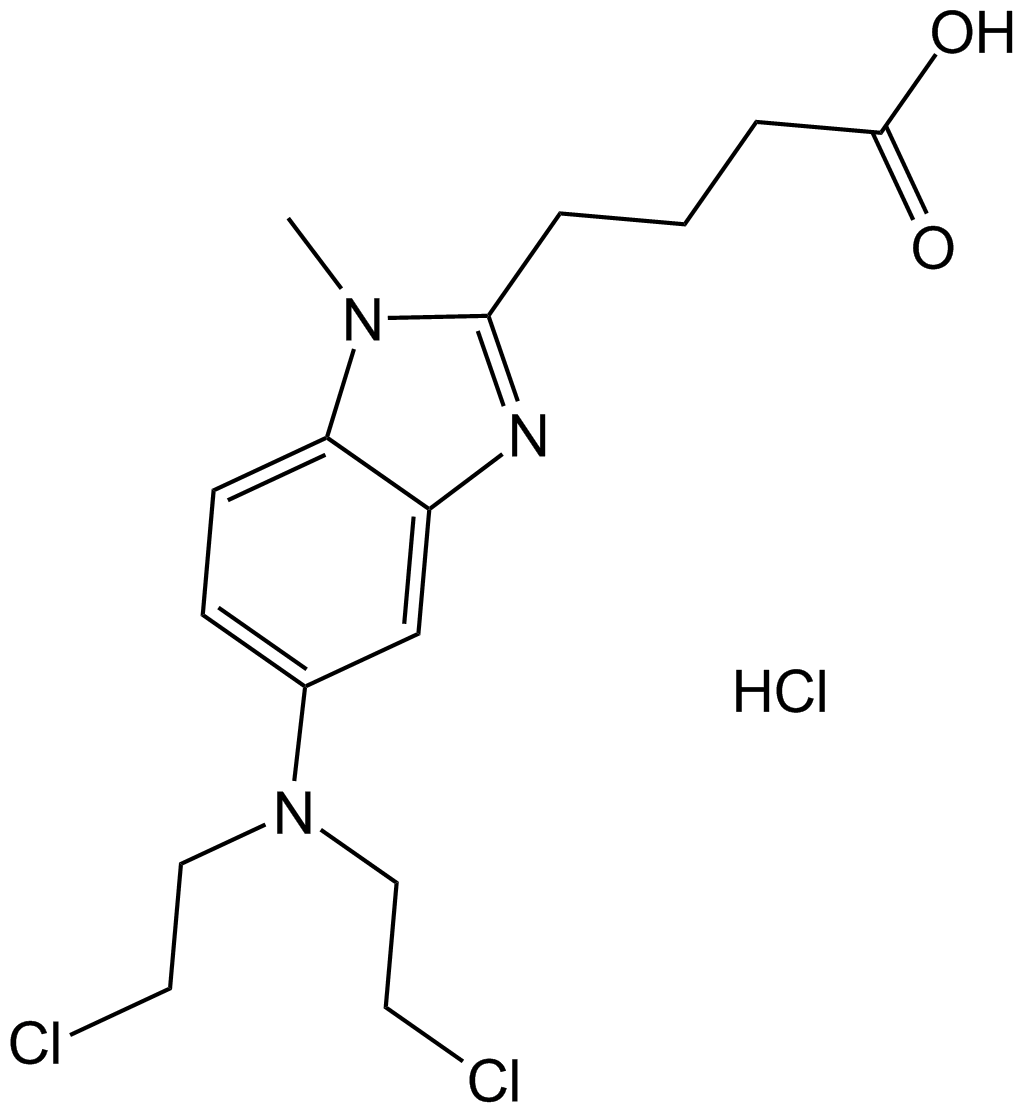
-
GC49781
Benomyl
A carbamate pesticide

-
GC62451
Benpyrine
La benpirina es un inhibidor de TNF-α muy especÍfico y activo por vÍa oral con un valor KD de 82,1 μM.
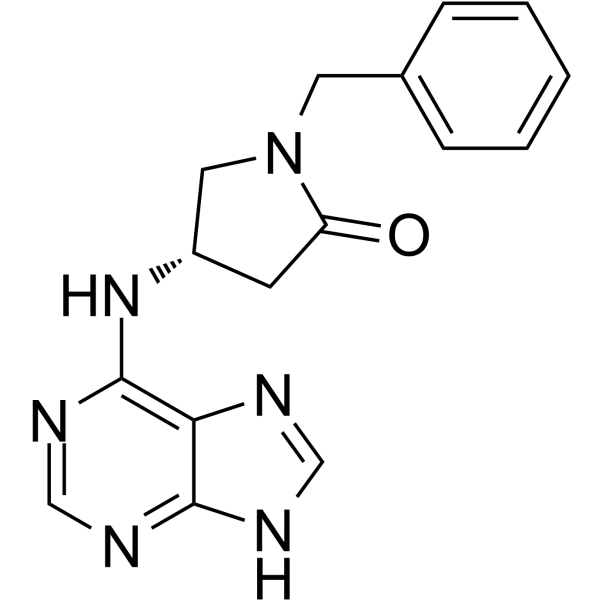
-
GC49403
Benzarone
La benzarona (Fragivix) es un potente inhibidor del transportador de Ácido Úrico humano 1 (hURAT1), con una IC50 de 2,8 μM en el ovocito.
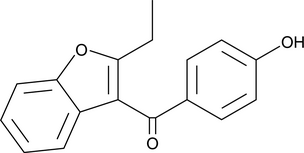
-
GC14930
Benzbromarone
La benzbromarona es un inhibidor no competitivo de la xantina oxidasa altamente eficaz y bien tolerado, utilizado como agente uricosÚrico, utilizado en el tratamiento de la gota.
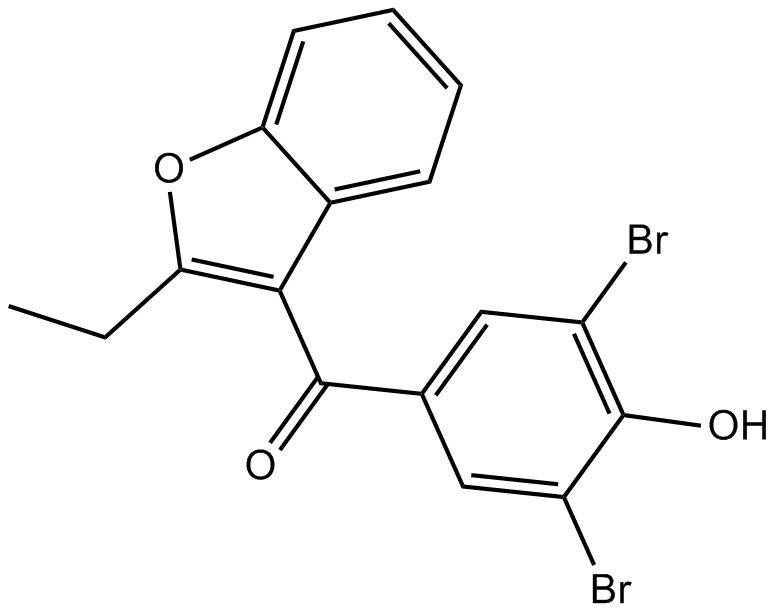
-
GN10520
Benzoylpaeoniflorin
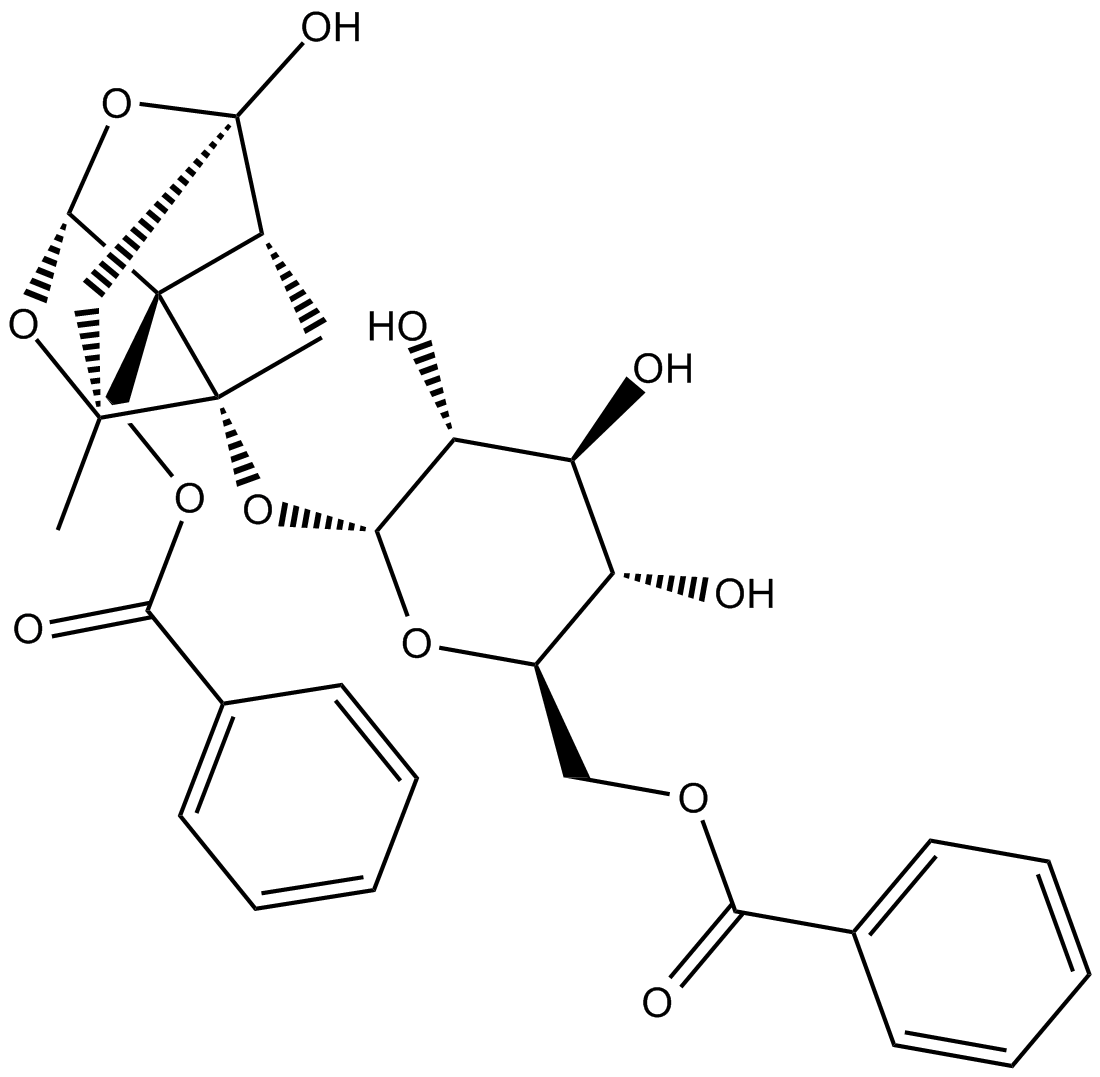
-
GC38683
Benzyl isothiocyanate
El isotiocianato de bencilo es un miembro de los isotiocianatos naturales con actividad antimicrobiana.
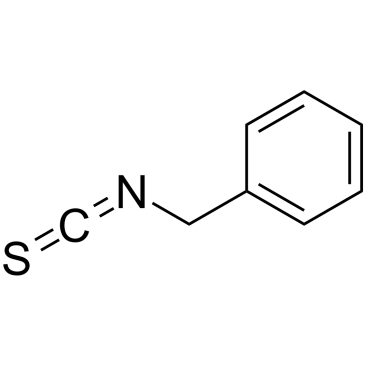
-
GN10358
Berbamine hydrochloride
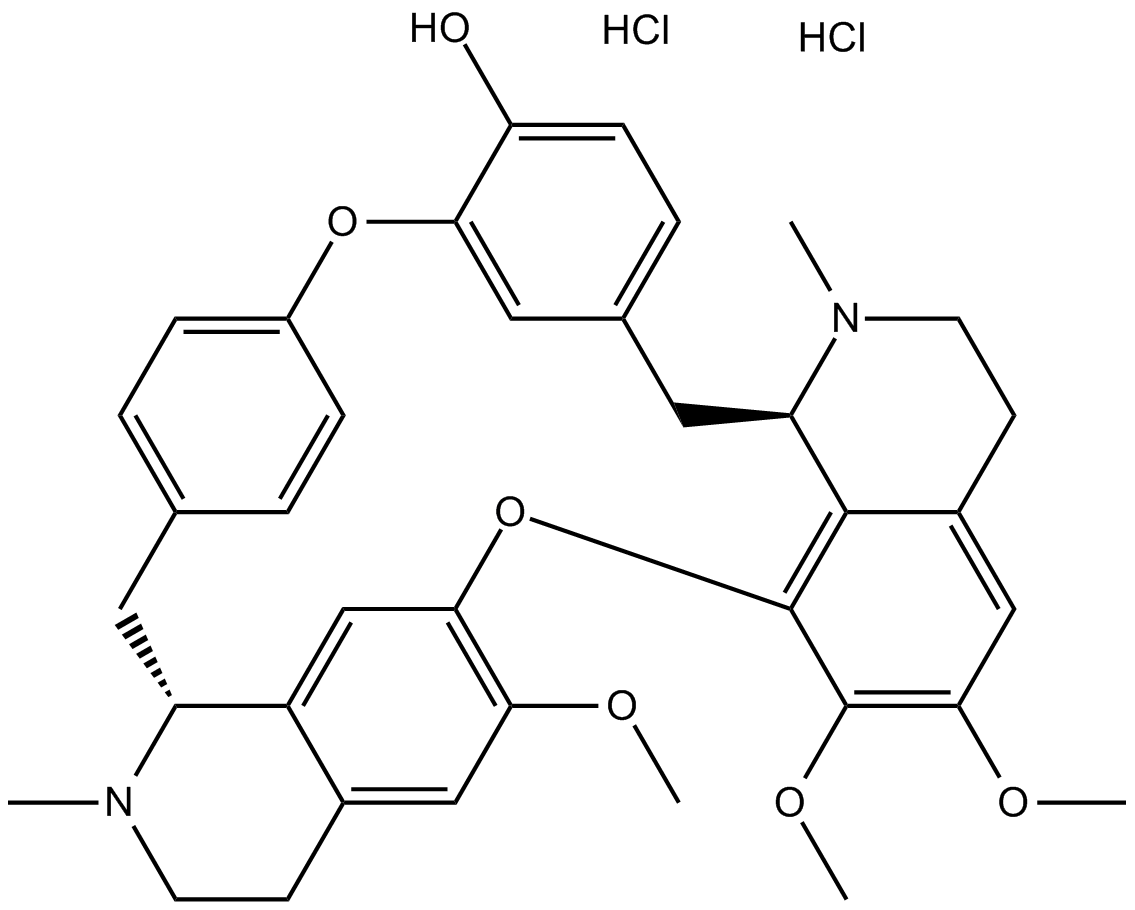
-
GN10539
Bergenin

-
GC42925
Berteroin
BerteroÍna, un anÁlogo de sulforafano de origen natural, entre otros, un agente antimetastÁsico.

-
GC10734
Beta-Lapachone
La beta-lapachona (ARQ-501;NSC-26326) es una O-naftoquinona natural que actÚa como inhibidor de la topoisomerasa I e induce la apoptosis al inhibir la progresiÓn del ciclo celular.
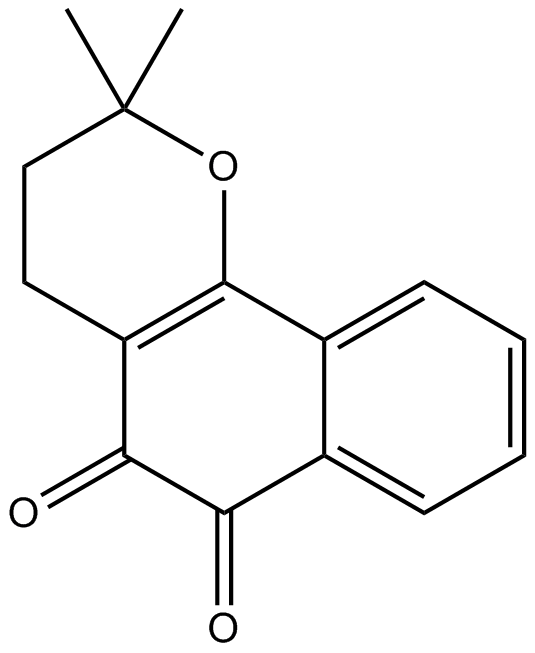
-
GC35504
Beta-Zearalanol
El beta-zearalenol es una micotoxina producida por Fusarium spp, que provoca apoptosis y estrés oxidativo en las células reproductivas de los mamÍferos.
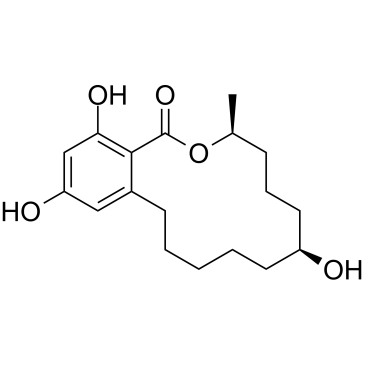
-
GN10632
Betulin
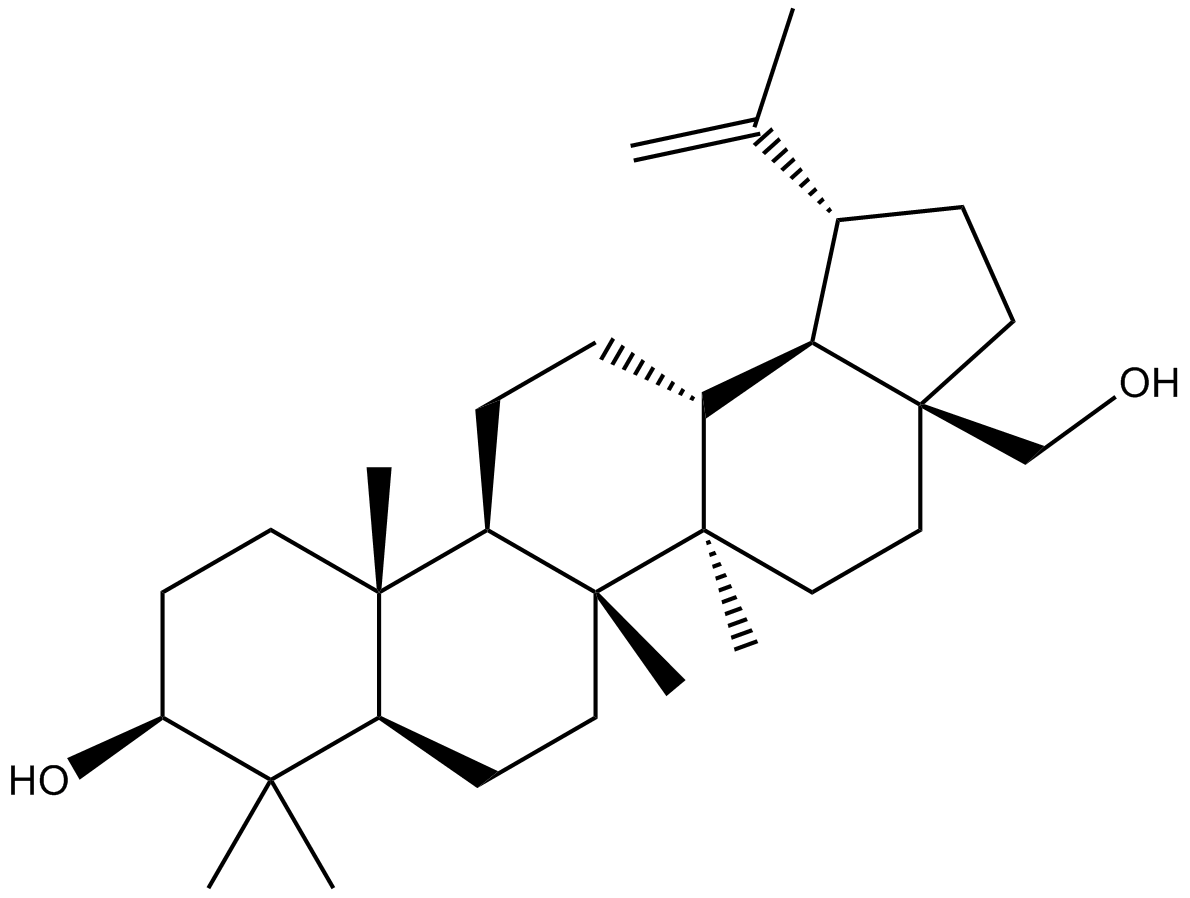
-
GC10480
Betulinic acid
A plant triterpenoid similar to bile acids
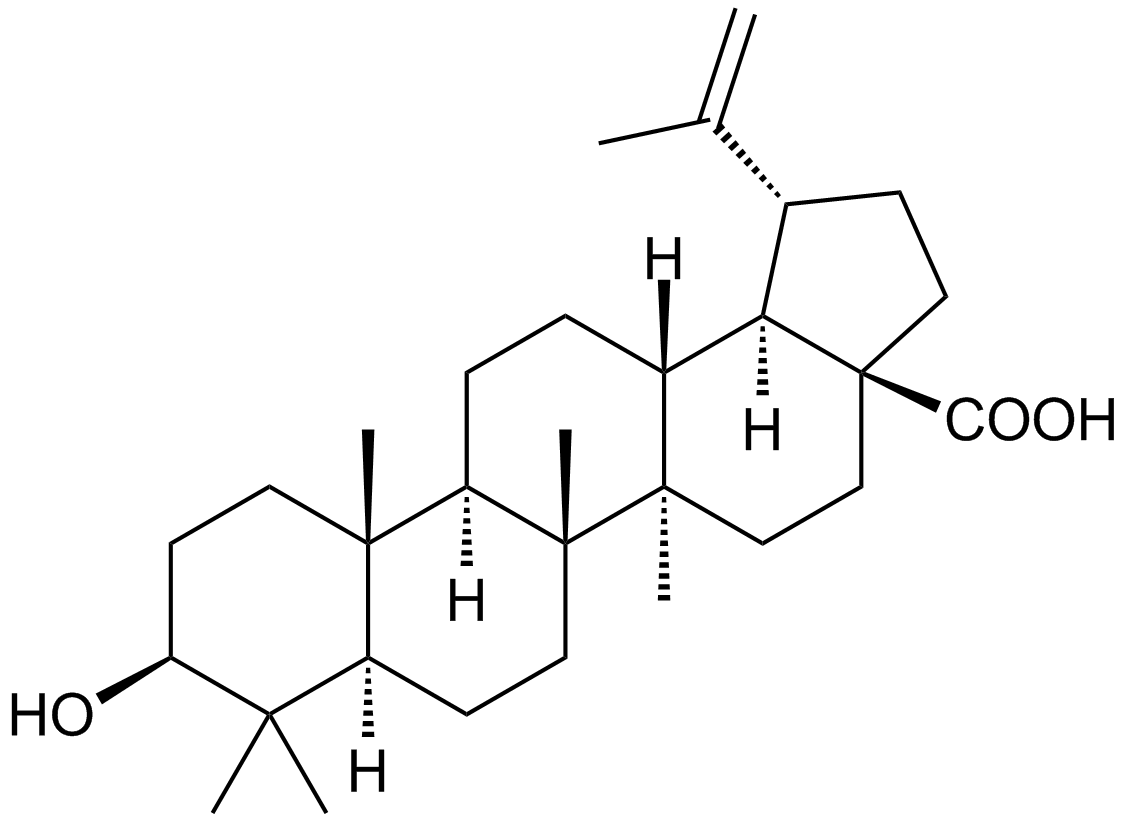
-
GC48477
Betulinic Acid propargyl ester
An alkyne derivative of betulinic acid

-
GC48504
Betulinic Aldehyde oxime
A derivative of betulin

-
GC48520
Betulonaldehyde
A pentacyclic triterpenoid

-
GC12074
BG45
BG45 es un inhibidor de HDAC clase I con selectividad por HDAC3 (IC50 = 289 nM).
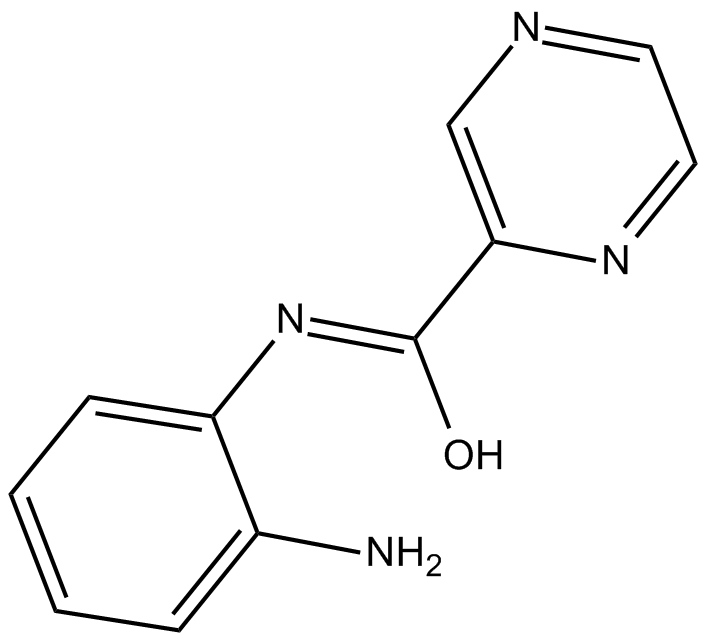
-
GC18136
BH3I-1
BH3I-1 es un antagonista de la familia Bcl-2, que inhibe la uniÓn del péptido Bak BH3 a Bcl-xL con una Ki de 2,4±0,2 μM en el ensayo FP. BH3I-1 tiene una Kd de 5,3 μM frente al par p53/MDM2.
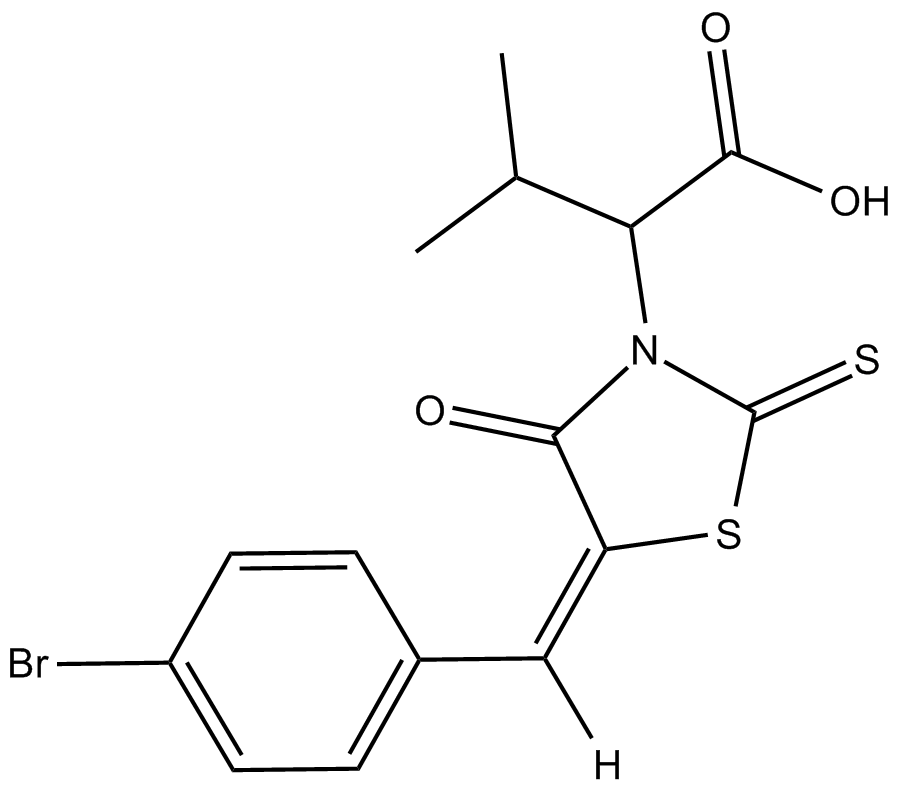
-
GC35511
BI-0252
BI-0252 es un inhibidor selectivo de MDM2-p53 activo por vÍa oral con una IC50 de 4 nM. BI-0252 puede inducir regresiones tumorales en todos los animales de un xenoinjerto SJSA-1 de ratÓn, con la inducciÓn concomitante de los genes diana de la proteÍna tumoral p53 (TP53) y marcadores de apoptosis.
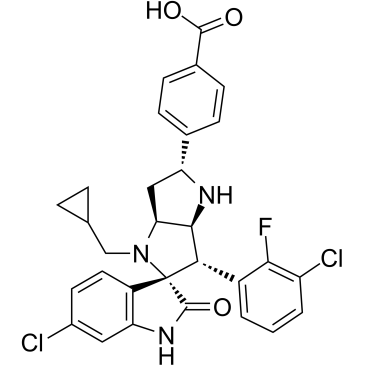
-
GC17828
BI-847325
BI-847325 es un inhibidor dual competitivo de ATP de MEK y aurora quinasas (AK) con valores IC50 de 4 y 15 nM para MEK2 y AK-C humanos, respectivamente.

-
GC11224
BI6727(Volasertib)
BI6727 (Volasertib) (BI 6727) es un inhibidor de la quinasa 1 (PLK1) tipo Polo, activo por vÍa oral, muy potente y competitivo con ATP, con una IC50 de 0,87 nM. BI6727 (Volasertib) inhibe PLK2 y PLK3 con IC50 de 5 y 56 nM, respectivamente. BI6727 (Volasertib) induce el paro mitÓtico y la apoptosis. BI6727(Volasertib), un derivado de la dihidropteridinona, muestra una marcada actividad antitumoral en mÚltiples modelos de cÁncer.
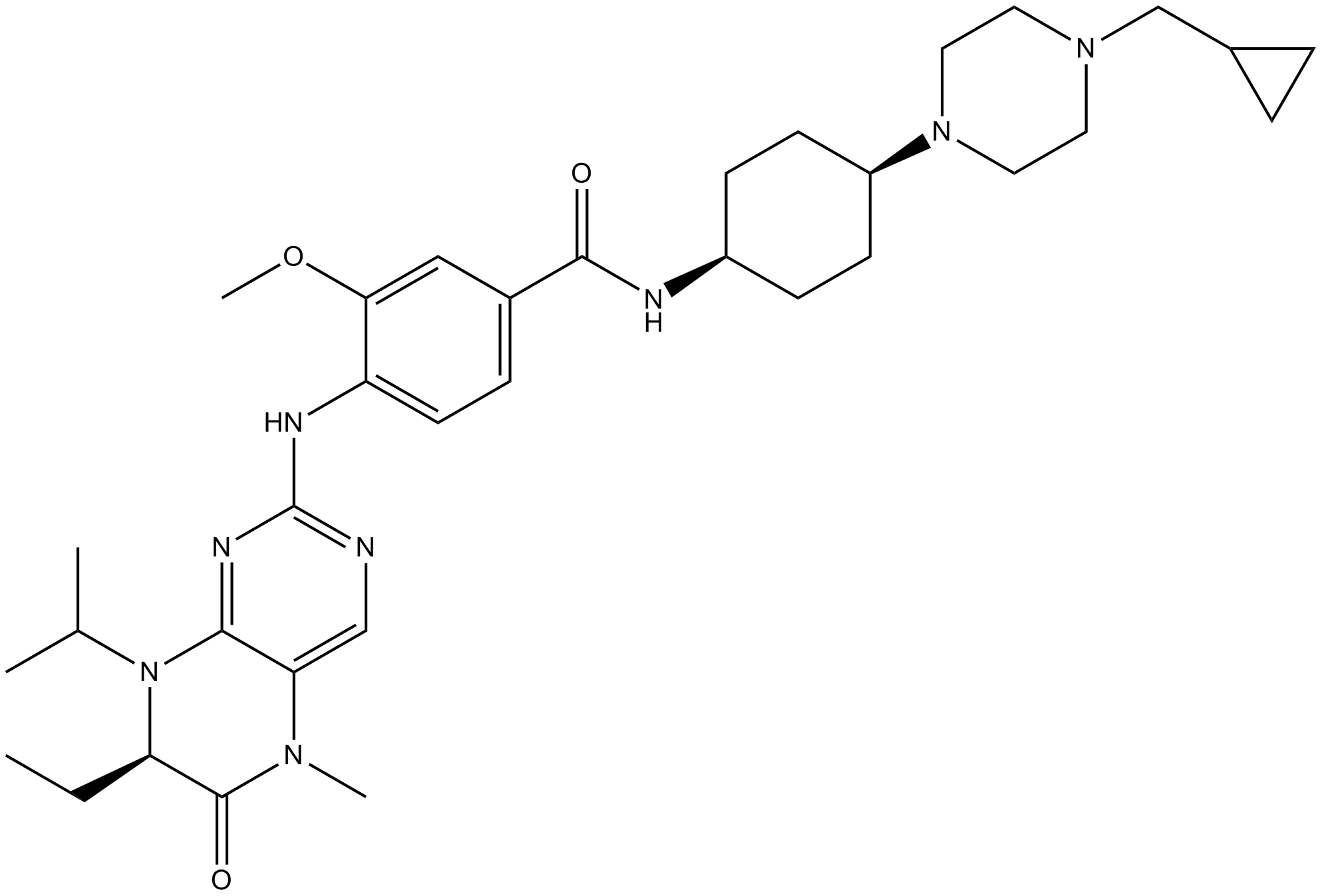
-
GC13636
BIBR 1532
BIBR 1532 es un inhibidor de la telomerasa potente, selectivo y no competitivo con una IC50 de 100 nM en un ensayo sin células.
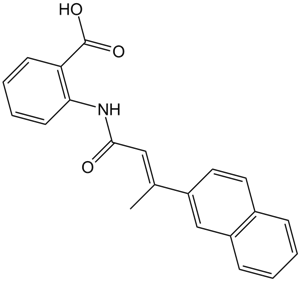
-
GC60076
Bigelovin
La bigelovina, una lactona sesquiterpénica aislada de Inula helianthus-aquatica, es un agonista selectivo del receptor α del retinoide X. La bigelovina suprime el crecimiento tumoral al inducir la apoptosis y la autofagia a través de la inhibiciÓn de la vÍa mTOR regulada por la generaciÓn de ROS.
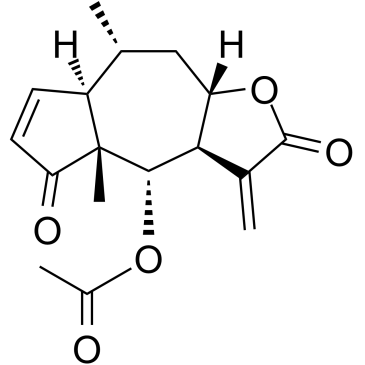
-
GC15987
BIM, Biotinylated
Bim peptide fragment with a biotin moiety attached
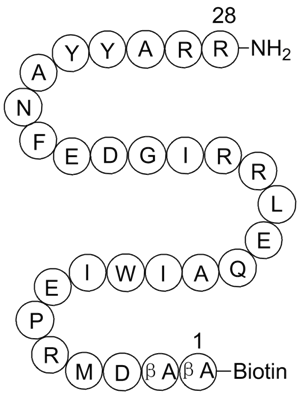
-
GC49513
Bim/BOD (IN) Polyclonal Antibody
For immunodetection of Bim-
related proteins 
-
GC52355
BimS BH3 (51-76) (human) (trifluoroacetate salt)
A Bim-derived peptide

-
GC14233
BIO-acetoxime
La BIO-acetoxima (BIA) es un inhibidor potente y selectivo de GSK-3, con IC50 de 10 nM para GSK-3α/β.
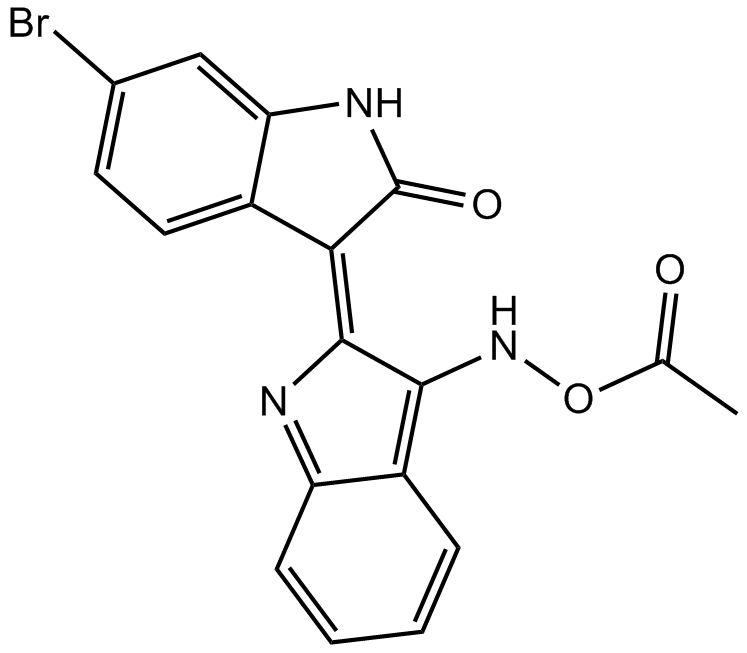
-
GC67680
BIO8898
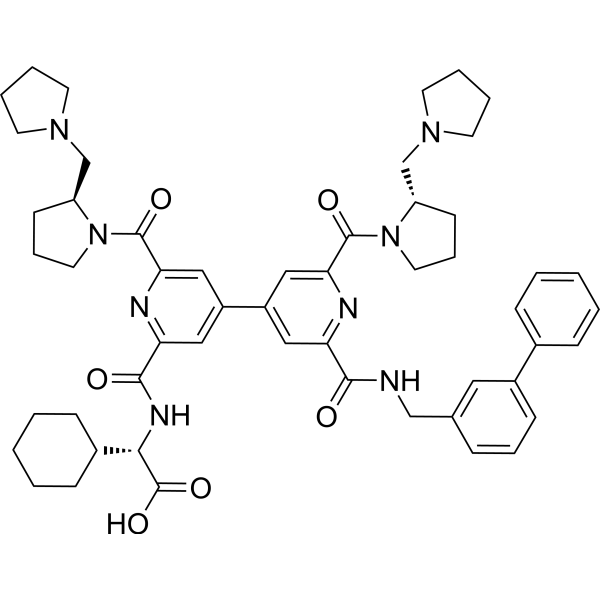
-
GC18476
Biotin-VAD-FMK
Biotin-VAD-FMK es un inhibidor de caspasa marcado con biotina irreversible, permeable a las células, que se utiliza para identificar caspasas activas en lisados celulares.
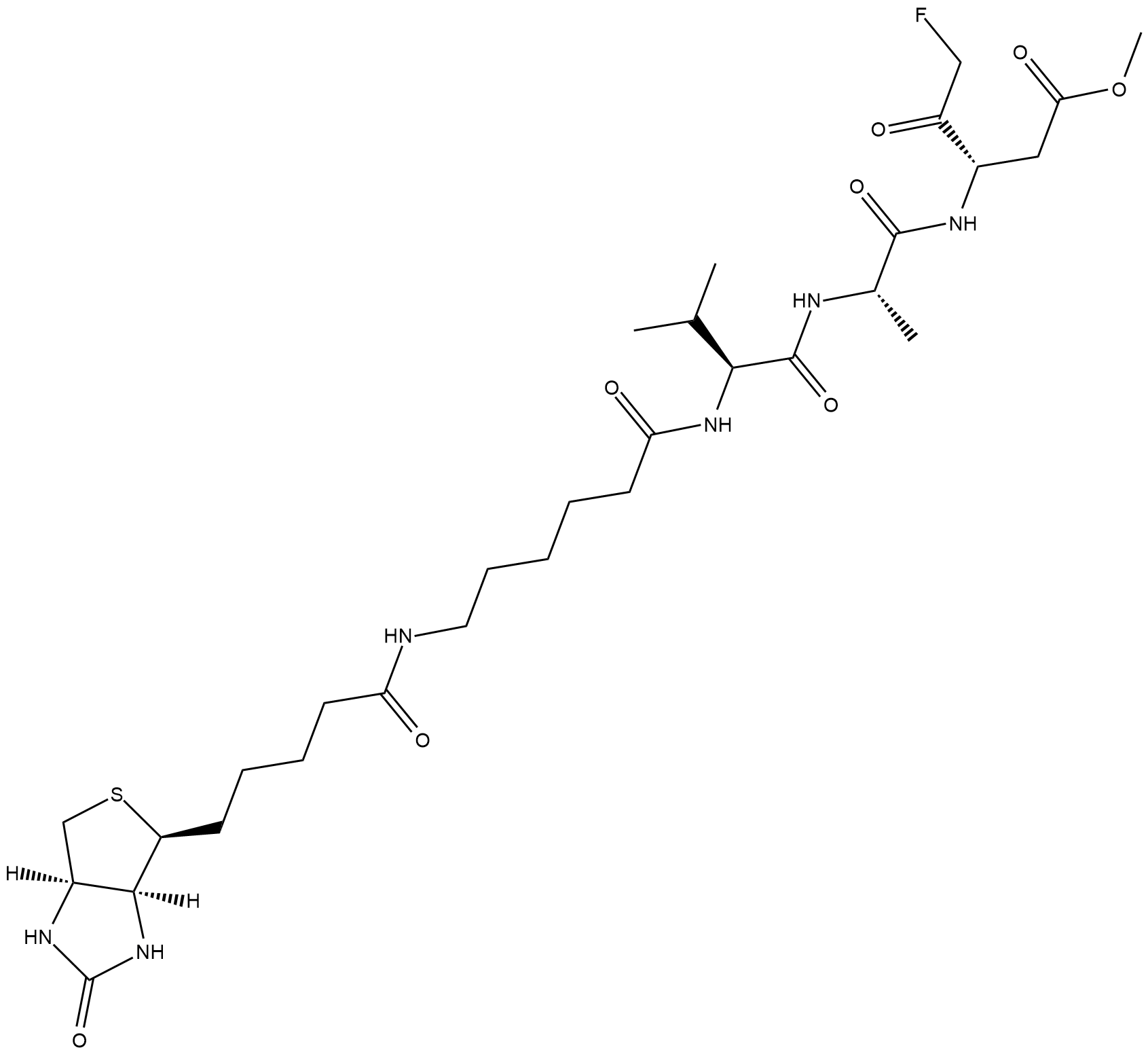
-
GC35523
Bioymifi
Bioymifi (activador DR5), un potente activador DR5 del receptor TRAIL, se une al dominio extracelular (ECD) de DR5 con una Kd de 1,2 μM. Bioymifi puede actuar como agente Único para inducir la agrupaciÓn y agregaciÓn de DR5, lo que lleva a la apoptosis.
